





























“
— Mike Cavanaugh, Shop Manager




















































“
— Mike Cavanaugh, Shop Manager





























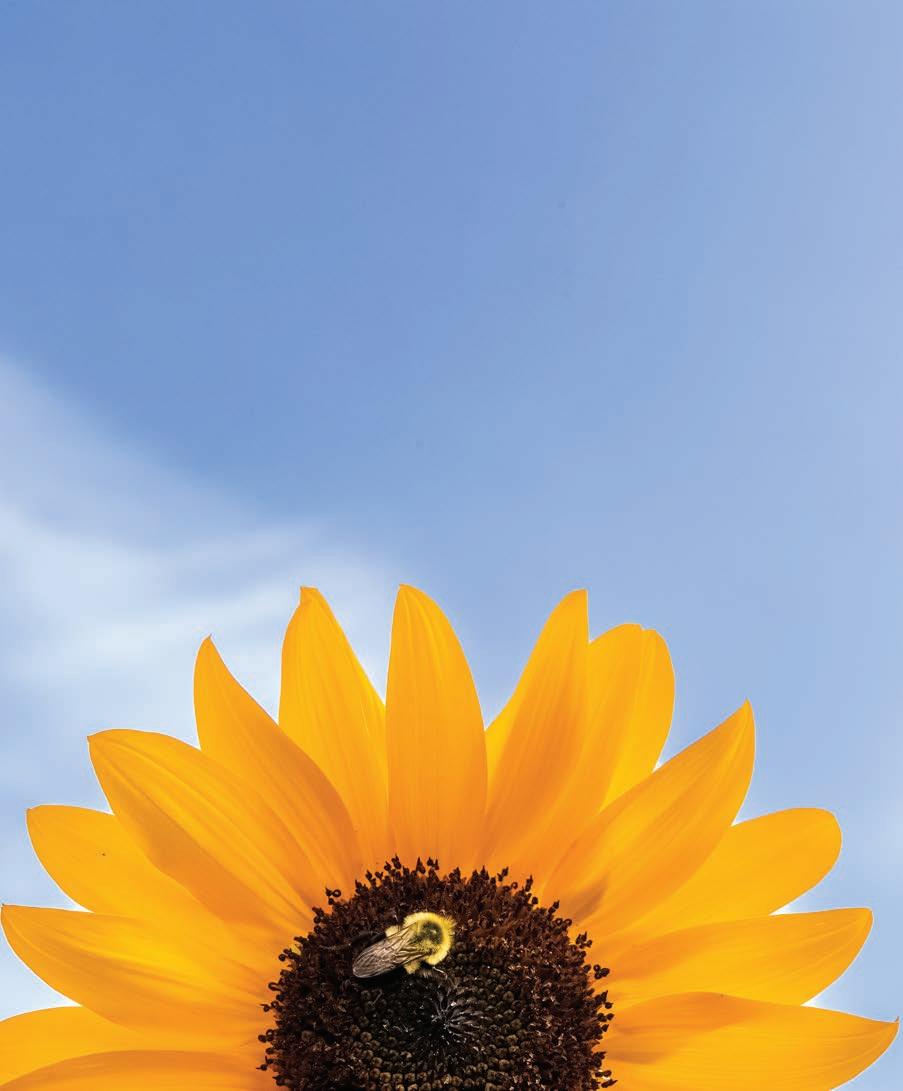
70
80





















Moore County’s Most Trusted Real Estate Team!



CAMERON • $278,000 280 RIDGE VIEW DRIVE
Lovely 3 BR / 2 BA split plan home with spacious layout and bright, open design. Home is situated in a peaceful setting!


PINEHURST•$350,000
85 PINE VALLEY ROAD, UNIT 78
Great 2 BR / 2 BA golf-front condo overlooking several holes on Pinehurst #3 course. Upper, end unit with side balcony just a short walk to Pinehurst resort and PCC. Perfect for a golf getaway!


Amazing 4 BR / 2.5 BA two-story colonial home situated on double lot in quiet cul-de-sac location. The floorplan is well-appointed and the home has been lovingly cared for!




ABERDEEN•$295,000 1026 DEVONSHIRE TRAIL
Attractive 3 BR / 2 BA home in Bethesda Farm community. Home has an open design layout and is situated on a nice lot surrounded by mature landscaping with fenced backyard.


PINEHURST • $445,000 10 TANDEM DRIVE Wonderful 3 BR / 2 BA ranch style home located in popular 7LN. Main living area is spacious with large kitchen and large back deck overlooking the back yard. This home has lots of appeal! SEVEN LAKES NORTH•$357,500 103 PINENEEDLE DRIVE






CAMERON • $269,000 210 SCRANTON COURT
Charming 3 BR / 2.5 BA home with large, fenced backyard, paver patio and fire pit. Main level is spacious with hardwood flooring and corner fireplace while the upper-level houses all 3 bedrooms and 2 full baths.
LISTING


PINEHURST • $435,000 15 MONMOUTH COURT Lovely 3 BR / 2 BA brick home in popular Lake Pinehurst area. Open and spacious floorplan all on one level with a gorgeous den/study with exposed ceiling beams and fireplace with brick hearth and a wall of bookcases! PINEHURST • $425,000 355 PINE VISTA DRIVE
Beautiful 3 BR / 2 BA white brick mid-century modern home in a great Pinehurst location offering a split bedroom floorplan with bright, open layout with hardwood flooring in main living area and bedrooms.


Appealing 7 BR / 5 BA lakefront property located in the beautiful Moore County countryside! This home offers lots of space inside and out. Perfect for a large family! Includes add’l parcel. VASS • $495,000 4609 LOBELIA ROAD




Moore County’s Most Trusted Real Estate Team!







PINEHURST • $875,000 63 ABBOTTSFORD DRIVE
Gorgeous 3 BR / 4 BA GOLF FRONT property off the 14th green of the Holly Course. Home offers exquisite detail and quality craftsmanship that a discriminating buyer will appreciate!


PINEHURST • $875,000 17 LA QUINTA LOOP
Unique 4 BR / 4 BA 3-level, waterfront home situated on nice double lot in private No. 6 location. Home is well-maintained with lots of space and an abundance of privacy. Transferable PCC membership available.


PINEHURST • $1,575,000 9 WICKER LANE
Spectacular 4 BR / 4 BA home tucked away in a private cul-de-sac in the Donald Ross neighborhood! It had a bright and open concept design with tons of custom features and transferable PCC Charter membership!


WEST • $519,000 107 DRUM HILL COURT


SOUTHERN PINES • $520,000 501 COTTAGE LANE
Charming 4 BR / 3 BA golf front home in Longleaf CC. Floorplan is open and light with natural gas fireplace in the living room, a bright Carolina room and panoramic golf views in back.


SEVEN LAKES WEST • $940,000 120 WERTZ DRIVE
Lovely 3 BR / 3.5 BA home on private corner lot with its own back yard oasis – water views of Lake Auman and saltwater pool. Home has well-appointed layout with lots of space!






VoLUmE 20, no. 9
David Woronoff, Publisher david@thepilot.com
Andie Stuart Rose, Creative Director andiesouthernpines@gmail.com
Jim Moriarty, Editor jjmpinestraw@gmail.com
Keith Borshak, Senior Designer
Alyssa Kennedy, Digital Art Director alyssamagazines@gmail.com
Emilee Phillips, Digital Content emilee@pinestrawmag.com
CONTRIBUTING EDITORS
Jim Dodson, Stephen E. Smith
CONTRIBUTING PHOTOGRAPHERS
John Gessner, Laura L. Gingerich, Diane McKay, Tim Sayer CONTRIBUTORS
Jenna Biter, Anne Blythe, Tom Bryant, Susan Campbell, Bill Case, Tony Cross, Brianna Rolfe Cunningham, Mart Dickerson, Bill Fields, Tom Maxwell, Mary Novitsky, Lee Pace, Todd Pusser, Joyce Reehling, Deborah Salomon, Scott Sheffield, Rose Shewey, Angie Tally, Kimberly Daniels Taws, Daniel Wallace, Ashley Walshe, Claudia Watson, Amberly Glitz Weber
ADVERTISING SALES
Ginny Trigg, Advertising Director 910.693.2481 • ginny@thepilot.com
Samantha Cunningham, 910.693.2505
Kathy Desmond, 910.693.2515
Terry Hartsell, 910.693.2513
Erika Leap, 910.693.2514
Christy Phillips, 910.693.2498
ADVERTISING GRAPHIC DESIGN
Mechelle Butler, Scott Yancey PS
Henry Hogan, Finance Director 910.693.2497
Darlene Stark, Circulation Director 910.693.2488
SUBSCRIPTIONS 910.693.2488
OWNERS
Jack Andrews, Frank Daniels III, David Woronoff
In memoriam Frank Daniels Jr.
145 W. Pennsylvania Avenue, Southern Pines, NC 28387 www.pinestrawmag.com












































HOPPER KATZ
KRASNER
O’KEEFFE
PEARLSTEIN
SARGENT
WHISTLER

















Few venues at Pinehurst better infuse the stylings of our vintage past with the modern comfort and casual elegance that Pinehurst is today than our newest outlet, the Carolina Vista Lounge. Completely renovated, Carolina Vista Lounge is an expanded cocktail bar with a contemporary menu unlike any other at Pinehurst, offering guests a stylish and satisfying respite befitting its setting in the historic Carolina Hotel.

By Jim DoDson
Aneighbor who walks by my house each evening like clockwork sees me sitting under the trees with a pitcher of ice water and walks over to say hello.
I invite Roger to take a seat and have a cold drink.
“It’s tough to keep moving in this heat,” he explains, sitting down. “It’s something, isn’t it? But your garden looks great. How do you keep it so nice and green?”
“A lot of worrying and watering,” I say. “Sometimes you have to make tough choices.”
In one of the hottest and driest summers in memory, I’d decided to let my yard turn brown in favor of keeping flowering shrubs and young trees watered and green. As the late famous British landscape designer named Mirabel Osler once said to me over her afternoon gin and tonic, landscape gardening is a ruthless business, especially in a drought. Grass will eventually return, but no such luck with a shriveled shrub or a dead young tree.
“September brings relief, rain and second blooms,” I add. “I’m already in a September state of mind.”
He smiles and nods.
“Hey,” he says casually, “let me ask you something.”
I expect another question about the garden. Like the best time of the day to water your shrubs, or when it’s safe to fertilize or prune azaleas.
But it isn’t even close.
“I’m worried about America. People seem so angry these days. Why do you think Americans hate each other?”
The question takes me by surprise. I could give him a few thoughts on the subject: the woeful decline of fact-based journalism, an internet teeming with conspiracy peddlers, politicians who feed on polarization, the unholy marriage of politics and religion, and the sad absence of civility in everyday life.
Instead, I tell him a little story of rebirth.
In the spring of 1983, I telephoned my dad from the office of Vice President George Bush and told him that I no longer wanted to be a journalist. For almost seven years, I’d worked as a staff writer of the Atlanta Journal-Constitution Sunday Magazine, covering everything from presidential politics to murder and
mayhem across the deep South. As a result of my work, I’d been offered my dream job in Washington, D.C., but found myself suddenly fed up with writing about crooks, con men and politicians. Bush, however, was an exception. We’d traveled extensively together during the 1980 campaign and had wonderful conversations about life, family and our shared love of everything from American history to golf. During our travels, Bush invited me to drop by his office anytime I happened to be in the nation’s capital. Unfortunately, he was traveling the day I turned down my dream job in Washington, but his secretary allowed me to use her phone. So, I called my dad and told him I planned to move to New England and learn to fly-fish.
“When was the last time you played golf?” he calmly asked.
“I think Jimmy Carter had just been elected.”
He suggested that I meet him in Raleigh the next morning.
So, I changed my flight and there he was, waiting with my dusty Haig Ultra golf clubs in his back seat. We drove to Pinehurst, played famed course No. 2 and finished on the Donald Ross porch, talking about my early midlife career crisis over a couple of beers. I’d just turned 30.
I told him that I “hated” making a living by writing about the sorrows of others, especially when it came to the increasingly shallow and mean-spirited world of politics.
“You may laugh, but here’s a thought,” the old man came back, sipping his beer. “Before you give up journalism, have you ever considered writing about things you love rather than things you don’t?”
Sadly, I did laugh. But he planted a seed in my head. A short

time later, I resigned from my job in Atlanta and wound up on a trout river in Vermont, where I learned to fly-fish, started attending an old Episcopal Church and knocked the rust off my dormant golf game at an old nine-hole course where Rudyard Kipling played when he lived in the area.
I soon went to work for Yankee Magazine and spent the next decade writing about things I did love: American history, nature, boat builders, gardeners and artists — a host of dreamers and eccentrics who enriched life with their positive visions and talents.
I also got married and built my first garden on a forest hilltop near the Maine coast.
“I never looked back,” I tell Roger. “I’ve built five gardens since.” Roger smiles.
“So, you’re telling me we all need to become gardeners?”
“Not a bad idea. Gardeners are some of the most generous people on Earth. We make good neighbors. Most of the country’s founders, by the way, were serious gardeners.”
I pour myself a little more ice water and tell him I’ve learned that gardens and democracies are a lot alike. “Both depend on the love and attention we give them. Especially in difficult times like these.”
Roger finishes his drink and stands up. “That’s something to think about. Here’s to September, cool weather and good neighbors,” he says. “Maybe by then even your grass will be green again.” PS
Jim Dodson can be reached at jwdauthor@gmail.com.


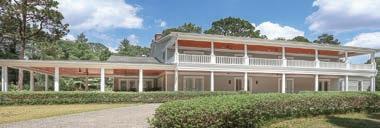
215 INVERRARY ROAD - FAIRWOODS ON 7
Privacy on 4.8 acres in the prestigious Fairwoods ON 7. Expansive rooms awash in natural light, French doors, hardwood floors, gourmet kitchen with large island, Master bedroom with fireplace. Extra large covered brick patio, 3 bay conditioned garage with epoxy floor. Extensively renovated in 2022,new bathroom fixtures, new HVAC, fresh air system, encapsulated crawl space, insulated attic.
$2,495,000

4 AUGUSTA WAY - PINEHURST
Charming, Historic, one of a kind Estate on over 2 acres. Gorgeous property, expansive patio across the back of


Soaring ceilings, large open spaces with natural light throughout. Charming home, handsome entry with stone walkway. An inviting foyer opens to an expansive view of the dining room, living room and sunny Carolina room. An open deck overlooks the golf course.
$569,000

5 WICKER LANE - PINEHURST
Just one mile from the Historic Village of Pinehurst. Spacious, open rooms, custom detail throughout, arched front-facing windows, plantation shutters, hardwood floors, handsome kitchen with large island. Special 41ft x 19ft Club room great for entertaining, fitness or guest quarters. Property on one acre. $1,850,000

14 ROYAL COUNTY DOWN – PINEHURST NATIONAL NO 9
Designed and built by Pinnacle Development Design/Build known for its proven construction methods and quality workmanship. Perfectly situated on the 13th hole of Pinehurst No 9 on Royal County Down. Pinehurst Country Club Signature GOLF membership for transfer with NO WAIT TIME. Immaculate, move in ready home, this home offers over 3600 square feet of
$1,350,000

3 SODBURY COURT - COTSWOLD
Desirable home just two miles from the Historic Village of Pinehurst. All brick, spacious open rooms, high ceilings, crown molding, bright kitchen opening to a charming outdoor private space. Owner enclosed the back porch to enjoy the now year-round Carolina Room overlooking a park-light setting.
$625,000

121 TRIPLE CROWN COURT LONGLEAF CC


The Country Bookshop welcomes bestselling author Nicholas Sparks to discuss his latest novel, Counting Miracles, from 6:30 to 7:30 p.m. on Monday, Sept. 30, at Lee Auditorium, 250 Voit Gilmore Lane, Southern Pines. Tanner Hughes, an Army Ranger, is the proverbial rolling stone: happiest when off on his next adventure, zero desire to settle down. But when his grandmother passes away, her last words to him are find where you belong. She also drops a bombshell, telling him the name of the father he never knew — and where to find him. You can learn the rest of the story by going to www.ticketmesandhills.com. Maybe buy the book, too?





Take a tour of the golden age of jazz with Peter Lamb and the Wolves, who bring the spirit of classic cinema to life on Sunday, Sept. 15, at the Fair Barn, 200 Beulah Hill Road S., Pinehurst. The sultry sounds of a saxophone, the soft glow of candlelight and the inviting expanse of a dance floor promise an evening of nostalgia and entertainment, all in support of the Linden Lodge Foundation. Call (910) 365-9890 to reserve your table of six or more or go to www. ticketmesandhills.com.

Sponsored by the Council of Gardens and the Sandhills Horticultural Society, Bruce A. Sorrie, the author of Wildflowers of the Sandhills Region, will talk about the wildflowers, shrubs and vines in their natural Sandhills habitats in a free event Friday, Sept. 13, at 1 p.m. in the Burlingame Room of the Ball Visitor’s Center, Sandhills Horticultural Gardens, at Sandhills Community College, 3395 Airport Road, Pinehurst. For additional information and to register go to www.sandhills.edu/ horticultural-gardens/upcoming-events.html.

Elementary-aged kiddos and their caregivers can listen to Jon Caruthers, NASA’s Solar System Ambassador, give his talk “Robots in Space!” at the Southern Pines Public Library 170 W. Connecticut Ave., Southern Pines, on Sunday, Sept. 8 from 2:30 p.m. to 3:30 p.m. For more information on this STEAM — science, technology, engineering, art and math — lecture call (910) 692-8235 or contact kbroughey@sppl.net



Local artists Pat McBride and Jenay Jarvis are co-hosts of an exhibit at the Campbell House Gallery, 482 E. Connecticut Ave., Southern Pines, titled “Strange Magic.” The exhibit of their work opens with a reception and chance to meet and speak with the artists on Sept. 6 from 6 to 8 p.m. The showing concludes on Sept. 26. For more information call (910) 692-2787 or go to www.mooreart.org/upcoming-art-exhibits.

Celebrate butterflies and other pollinators with a day of family fun at the Flutterby Festival at the Village Arboretum, 375 Magnolia Road, Pinehurst, on Saturday, Sept. 28, from 11 a.m. to 2 p.m. There will be live music, activities and food, plus lots of learning about monarch butterflies, birds and insects. Programs include an opportunity to interact with and feed hundreds of newly emerged monarchs in the Magical Monarch Tents. For information go to www.vopnc.org or www. ticketmesandhills.com.
Housed in the historic 1823 cabin at 15 Azalea Road smack in the middle of the village of Pinehurst, the Sandhills Woman’s Exchange reopens for the fall season on Wednesday, Sept. 4. Hours are 10 a.m. to 3 p.m., Monday through Friday, with lunches served from 11 a.m. to 2 p.m. The gift shop will be stocked with new and unusual items for a bit of early Christmas shopping. For more information call (910) 295-4677 or go to www.sandhillswe.org.

Take a Chance on Me
Mamma Mia, the Swedish band ARRIVAL performs an ABBA tribute — see what we did with the all-caps? — at BPAC’s (yeah, OK, that’s all-caps, too. And so is OK. Oh, dear.) Owen’s Auditorium, 3395 Airport Road, Pinehurst, on Tuesday, Sept. 10. Knowing me and knowing you, tickets and information can be had at www.ticketmesandhills.com.



Join the “Entitled Housewife,” Becky Robinson, for a comedy special at BPAC’s Owens Auditorium, 3395 Airport Road, Pinehurst, from 7 to 8 p.m. on Friday, Sept. 6. Robinson’s explosively unique character antics and viral videos have racked up millions of views and fans across social media. For information and ticketing go to www.ticketmesandhills.com.

(August 23 –September 22)
We appreciate your pragmatism. We really do. That said, it’s time to occupy the rooms in your Fifth House of Pleasure. (Note: Reorganizing the Tupperware doesn’t count.)
What if there was no one to impress, no one to “fix,” nothing to accomplish? Try not trying so hard for five seconds and experience what can only be described as actual, factual joy. The Tupperware will be the icing on the cake.
leaf “fortunes” for the rest of you:
Libra (September 23 – October 22)
Try clicking refresh.
Scorpio (October 23 – November 21)
Eat your greens.
Sagittarius (November 22 – December 21)
The aftertaste will be complex.
Capricorn (December 22 – January 19)
Embrace the imperfection.
Aquarius (January 20 – February 18)
There’s no going back.
Pisces (February 19 – March 20)
Conjure your own plot twist.

Aries (March 21 – April 19)
A full-bodied month with a buttery finish.
Taurus (April 20 – May 20)
Hint: The underdog wins.
Gemini (May 21 – June 20)
No need to spill all your secrets.
Cancer (June 21 – July 22)
One word: remediation.
Leo (July 23 – August 22)
Bring some cash. PS
Zora Stellanova has been divining with tea leaves since Game of Thrones’ Starbucks cup mishap of 2019. While she’s not exactly a medium, she’s far from average. She lives in the N.C. foothills with her Sphynx cat, Lyla.


100% WAGYU BEEF & BERKSHIRE PORK RAISED ON OUR FARM IN TURKEY, NC
Discover the unmatched taste of Wilders, where quality and flavor come together in every cut!
Shop our product online or in-store at a location n you! Scan the QR code below or visit our website fo more information!
Follow us on social media @wildersbrand to keep up with all things WILD! Be the first to know about sales, promotions, product launches, and more!
| 919.551.8102



“memoir”
By Stephen e . Smith
Writers have twitches and tics of style and substance that identify them as distinctly as their DNA — and writers of exceptional talent are possessed by obsession, a focus on subject matter that elevates their work to a purity that establishes a commonality with their audience. North Carolina’s Thomas Wolfe was such a writer. So is Bland Simpson.

Simpson has earned a reputation as the chronicler of the North Carolina coast and sound country. His books include North Carolina: Land of Water, Land of Sky, The Great Dismal, and Into Sound Country, books that demonstrate his love of the state and the region where he was raised. He has appeared in numerous PBS (WUNC) documentaries, and his familiar voice graces the soundtrack to travelogues exploring the coastal region. In short, he’s the go-to guy when it comes to the history and evolution of coastal North Carolina. For many years, he’s been the Kenan Distinguished Professor of English and Creative Writing at the University of North Carolina at Chapel Hill.
In his latest book, Clover Garden: A Carolinian’s Piedmont Memoir, Simpson remains in familiar territory — he’s writing about the state — but he’s moved his focus west to an area outside Chapel Hill where he’s lived for the last 50 years.
Where is Clover Garden?
Head west out of Carrboro until you hit N.C. 54. Drive northwest into gentle farmland until you pass the old White Oak School. If there’s a sign for Swepsonville, you’ve gone too far. You can try that, but you won’t happen upon the
place name that serves as the title of Simpson’s memoir. According to Simpson, Clover Garden is closer to Carrboro than Graham. He describes it as “a small, four-square-mile country community to the old Porter Tract of the low Old Fields, lying beside the Haw River just a few miles west of Chapel Hill and Carrboro. . . .” But in truth, readers will suspect that Clover Garden is anywhere in North Carolina’s vast rolling Piedmont, any plot of land inhabited by neighbors who live harmoniously in tight-knit communities.
“Memoir” in the title is used in the loosest sense. There’s maybe a thread of chronology at work, but Simpson takes an impressionistic approach to his writing, à la Manet (not Monet). Readers who remember their art history will be reminded of the details in Music in the Tuileries and The Café-Concert , images in which all the specifics matter to the whole.
Clover Garden is divided into 45 segments — short narratives, random observations, anecdotes, even gossip — that, when taken together, comprise the “memoir” and give the readers a sense of a particular time and place. These independent segments are skillfully illustrated and enhanced with photographs by Ann Cary Simpson, whose keen eye for specific and illuminating images has enhanced Clover Garden and her husband’s previous books. If the impressionistic comparison seems a trifle pretentious, the narratives Simpson shares are not. He writes of pool halls, pig pickings, snowstorms, country stores, great horned owls, folklore, boatwrighting, cafes and bars, stars, and riderless horses, all the bits and pieces, practical and impractical, that comprise our daily lives. And if you’ve lived in the Piedmont, there’s a good chance you’ll know a few characters who contribute color to the storytelling. If you don’t recognize any of the characters, you know them well enough at the conclusion of the memoir, or you’ll recognize their counterpart in your circle of






OCTOBER 22
The State of Play in the NCAA


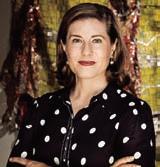
A panel discussion with Dr. Jim Phillips, Bubba Cunningham, and moderator Debbie Antonelli

JANUARY 21


The Thinking and Talking Brain: Communication, Connection, and Mental Health after Brain Injury and Concussion
Dr. Katy O’Brien



FEBRUARY 18


NOVEMBER 12
Art, Nature, and People: Inspiring Joy and connection at the North Carolina Museum of Art
Dr. Valerie Hillings

APRIL 29
Everyone’s a Critic Adam Feldman
The Untold Story of Sharks


Dr. Jess Cramp with National Geographic Live Bringing explorers from the field live on stage
All lectures begin at 7 p.m. and are held in BPAC’s Owens Auditorium at Sandhills Community College. Registration is required and FREE. Please scan the QR Code or use the TicketMeSandhills link below to register. The Ruth Pauley Lecture Series also welcomes your donations to help us offset our yearly costs.
www.ticketmesandhills.com/organizations/ruth-pauley-lecture-series for additional info about our lecture series visit www.ruthpauley.org

friends and acquaintances.
Simpson’s descriptions embody an easy blending of history with a touch of nostalgia as in this sepia-tinged recollection of old friends and poolhalls (one of which was frequented by this reviewer): “In time, Jake Mills showed me his two favorite pool halls, Happy’s on Cotanche Street in Greenville and Wilbur’s on Webb Avenue in Burlington. After school in the 1950s, he and Steve Coley used to play quarter games with the textile mill hands coming off first shift and drifting into Wilbur’s straight from work. The cigarette haze hung low below the green shades, and the cry of ‘Rack!’ was in the air, and the balls clicked and clacked, and, like many a youth before them, Jake and Steve picked up pin money in this Alamance County eight-ball haven.” Even Neville’s, a longestablished Moore County watering hole, receives a passing mention in Simpson’s narrative explorations.
Above all else, Simpson is a master prose stylist, a poet at heart. His sentences are graceful and well-tuned — thoroughly worked on to get that “worked on” feeling out — and laced with continual surprises to save them from predictability. Simpson is always a pleasure to read, and he can transport the reader to familiar ground as if it’s being seen anew. “. . . alongside dairy cows, beeves and horses in pastures meeting deep forests of white oaks and red oaks and pines, copses of them around country churches, and straight up tulip poplars and high-crown hickories, American beech and always sweet gum, muscadine vines everywhere, willows close to the waterlines of ponds where big blue heron stalk and hunt, ponds full of bass and bream, shellcrackers and pumpkinseed and catfish prowling the bottom . . . .”
Thomas Wolfe would approve. PS
Stephen E. Smith is a retired professor and the author of seven books of poetry and prose. He’s the recipient of the Poetry Northwest Young Poet’s Prize, the Zoe Kincaid Brockman Prize for poetry and four North Carolina Press Awards.



The Write to Heal: Discovering Veterans’ Voices.
Sundays: September 8, 15, 22, 1:00 - 3:00 p.m.
Led by award-winning authors Joseph Bathanti and June Guralnick, the series will have a special focus on the power of writing for members of the United States Armed Forces (active duty or reserve), National Guard, and military veterans and their families.
Tuesday, September 17, 2:00 p.m.
The September Book is Shadows of Saigon by Mark R. Anderson. The James Boyd Book Club reads and discusses the work of North Carolina authors – past and present.
Sunday, September 29, 2:00 - 4:00 p.m. Award winning Rebecca Kleinmann and her multinational quartet present their original sound inspired by Brazilian Jazz. Bring your own blanket, chairs, and a picnic, and enjoy our cash bar with mimosas, beer, wine, and non-alcoholic beverages available.
Also! Beginning in October, join us for an immersive theater experience, Long Words, that will aim to tell the story of the Boyds and the history of Weymouth!


Scan the QR code for subscription tickets and additional information!
East Connecticut Avenue, Southern Pines, NC





















The Wildes: A Novel in Five Acts, by Louis Bayard
In September of 1892, Oscar Wilde and his family have retreated to the idyllic Norfolk countryside for a holiday. His wife, Constance, has every reason to be happy: two beautiful sons, her own work as an advocate for feminist causes, and a delightfully charming and affectionate husband and father to her children, who also happens to be the most sought-after author in England. But with the arrival of an unexpected houseguest, the aristocratic young poet Lord Alfred Douglas, Constance gradually — and then all at once — comes to see that her husband’s heart is elsewhere, and that the growing intensity between the two men threatens the whole foundation of
The Wildes: A Novel in Five Acts takes readers on the emotional journey, moving from the Italian countryside to the trenches of World War I and an underground bar in London’s Soho, where Oscar’s sons, Cyril and Vyvyan, grapple with their
When retired math teacher Grace Winters is left a run-down house on a Mediterranean island by a long lost friend, curiosity gets the better of her. She arrives in Ibiza with a one-way ticket, no guidebook and no plan. Among the rugged hills and golden beaches of the island, Winters searches for answers about her friend’s life, and how it ended. What she uncovers is stranger than she could have dreamed. But to dive into this impossible truth, she must first come to terms with her own past. Filled with wonder and wild adventure, this is a story of hope and the life-changing power of a new beginning.


When We Flew Away: A Novel of Anne Frank Before the Diary, by Alice Hoffman
Anne Frank’s The Diary of a Young Girl has captivated and inspired readers for decades. Written while she and her family were in hiding during World War II, it has become one of the central texts of the Jewish experience during the Holocaust, as well as a work of literary genius. With the Nazi occupation of the Netherlands, the Frank family’s life is turned inside out. In the midst of impossible danger, Anne, audacious and creative and fearless, discovers who she truly is. With a wisdom far beyond her years, she will become a writer who will go on to change the world as we know it. Hoffman weaves a lyrical and heart-wrenching story of the way the world closes in on the Frank family from the moment the Nazis invade the Netherlands until they are forced into hiding, bringing Anne to bold, vivid life.
Building Material: The Memoir of a Park Avenue Doorman, by Stephen Bruno
As an academically gifted Latino kid growing up in the Bronx, Bruno’s family had high aspirations for his future, but those dreams were derailed when he followed a girlfriend to Minnesota and a dead-end job. Languishing and unable to get it together, Bruno eventually moved back home. Broke and eager to make a way for himself — and away from the oppressively religious father wreaking havoc on his love life — the affable, easygoing, quickwitted Bruno lands a much-coveted job as a doorman at a highend building on Park Avenue. Hilarity and drama soon abound as he learns the dos and don’ts of being a doorman for the rich and famous, and witnesses the antics going on behind the front entrance of this swanky building.
Puppy Talk: How dogs tell us how they feel and Cat Chat: How cats tell us how they feel, by Jess French Kids raised with pets in the home just instinctively know how to interact with animals. For others, there’s a bit of a learning curve, and these fabulous new books are simple enough for the youngest readers while detailed enough to remind anyone that animals do talk, if people know how to listen. (Ages 2-6.)


Don’t
Enjoy your choice of scratch made Entrée, 2


The Tryout, by Christina Soontornvat
It’s the new school year and the start of eighth grade, and the most important thing for Christina and her best friend, Megan, is trying out for the cheer squad. Making the squad is more than just playing a sport; it means being part of a team, working together, and surviving all the challenges that come with friends, families and fans. (Ages 12 and up.)
The Witching Wind, by Natalie Lloyd
Two unlikely friends live in a town with a mysterious magical wind that usually steals things, but this time it has stolen people — two people who are very important to the friends. From the author of the beloved A Snicker of Magic comes this story of friendship and family, and how things that are just a little bit weird can be quite wonderful. (Ages 10 and up.)


Popcorn, by Rob Harrell

Andrew is having a day. It’s picture day, of course, and his new shirt got ripped by the class bully, his glasses broken by a rogue basketball — and we won’t even talk about the ketchup rocket in the cafeteria — but now his grandma is missing, and Andrew’s stress meter is just about to pop. Lots of kids deal with anxiety in different ways, but for some, it takes over. This funny, real, honest book is for them. Do an anxious kid a favor and put Popcorn in their hands. (Ages 10 and up.) PS
Compiled by Kimberly Daniels Taws and Angie Tally


YOU ARE CORDIALLY INVITED TO ATTEND
OPENING NIGHT: ETERNAL ECHOES - Saturday, October 26, 2024
The power of Beethoven, the beauty of Smetana and the fiery passion of Rachmaninoff in symphonic celebration, featuring the young American pianist Rachel Breen.
MOZART’S REQUIEM - Saturday, November 16, 2024
Maestro David Michael Wolff leads the Philharmonic, guest vocalists and a powerful chorus, in a poignant rendition of Mozart’s Requiem. (RE Lee Auditorium, Pinecrest HS)
HOLIDAY POPS - Friday, December 6th & Saturday, December 7th
Ring in the Holidays with a celebrated Pinehurst tradition.
PARISIAN PASSION - Saturday, February 22, 2025
Experience Parisian Passion with Kate Liu’s exquisite performance of Chopin’s Piano Concerto No. 2 and the Philharmonic’s stirring rendition of Ravel’s Boléro under Maestro Wolff.
GENERATIONS - Saturday, March 22, 2025
The Carolina Philharmonic Youth Orchestra and Chorus in a tapestry of musical heritage and emerging brilliance led by Maestro Wolff.
RIPPLES OF SPRING - Saturday, May 3, 2025
Journey from the serene meadows of Copland’s Appalachian Spring to majestic skies of Sibelius’s Finlandia, culminating in the lyrical depths of Saint-Saëns Cello Concerto No. 1, featuring the artistry of an exceptional soloist.
BROADWAY BLISS - Saturday, May 17, 2025
The timeless allure of Broadway hits performed by two captivating Broadway stars.
All performances start at 7:30PM in Owens Auditorium, BPAC, SandhillsCommunity College except Mozart’s Requiem (RE Lee Auditorium, Pinecrest HS).
A FUNDRAISER TO SUPPORT
The Carolina Phiharmonic’s Music Education Programs benefiting 3,500 Moore County children annually.
Friday, September 13th • 5:30-8:30PM The Pinehurst Fair Barn • $175/ per person
Festive Live & Silent Auctions • Exquisite hors d’oeuvres catered by Elliotts Catering Co
Exceptional musical entertainment! Experience it Live!
To purchase tickets call (910) 687-0287 or visit the Box Office at 5 Market Square in the Village of Pinehurst
The Carolina Philharmonic is a 501(c)3 non-profit.




By Bill FieldS

Around Labor Day, give or take, the long, free-range days of summer break in the Sandhills paused. Games played with everything from golf balls to basketballs, the construction of mighty forts and quenching one’s thirst from a garden hose gave way to the more structured schedule that came with the resumption of school. It was time to toe the line.
The threat of a keen switch (home) or a hefty paddle (school) was usually enough to keep me from misbehaving. My tendencies were to follow the rules and stay out of trouble, regardless of the season. I even received a DAR Good Citizens Award during a luncheon at the Country Club of North Carolina, a distinction I trumpeted on college applications as a counterpunch against terribly low math grades and board scores.
Had the fine ladies recognizing me done a more robust background check, however, someone else might have been feted over chicken cordon bleu at CCNC. They clearly hadn’t been aware of my checkered past, three occasions in childhood when I did not live up to my reputation.
We hung things on our clothesline to dry, but there were exceptions. Every so often, a trip to wash and dry bedspreads and slipcovers was necessary. There was a small laundromat located on South Bennett Street, near the rear of the A&P, not far from the intersection with Morganton Road.
One Saturday morning when I was in elementary school, I accompanied Dad there. Hearing the quarters tumble out of the coin changer was cool, but soon I was fidgeting in the plastic chair. I started to run around and loitered by the entrance, glancing at Dad.
“Don’t play by the doors!” my father said after taking a deep drag on his cigarette.
I returned inside to the heat and methodical whir of the oversize dryers and sat in one of those plastic seats that seemed to exist only in laundromats. But I returned to the glass doors, opening one side toward the parking lot. I did so a few times, until it collided with a car bumper poking over the curb. The ride
home was as silent as the shattering of the glass had been loud. Not long after that incident, I accompanied Mom and Dad to Greensboro, where one of my older sisters was going to college. She also had a part-time job, and she wanted to take us out, her treat. The restaurant of choice had two parts, fancy and casual. It being a special night, we went to the former.
I was in a brief hamburger phase, when that was my preferred supper, particularly on infrequent meals away from home. Well, the fancy side of the restaurant didn’t have hamburgers on its menu. I reacted by getting on the floor and having a tantrum, like some overwrought, overacting kid in a B movie. It is a wonder my sister ever spoke to me again.
Just months later, my good behavior went missing a third time. The setting was innocent enough as our family gathered around the kitchen table enjoying plates from Russell’s Fish House. It was a feast of flounder and all the trimmings: slaw, hushpuppies, French fries.
Aunt Blyn, my mother’s sister, was in town, visiting from her home in northeastern North Carolina. Mom to my three very cool older cousins, Blyn smoked Camels and drank Sanka, talked slowly, and dressed properly. She had sung and played the piano most of her life, and even though she couldn’t hit all the notes anymore, that did not stop her renditions of “Release Me” on the upright in our living room.
The evening we were all enjoying the takeout seafood, Aunt Blyn was seated across and slightly left from me. There was a bottle of ketchup on the table, but the meals had come with plastic packets of the condiment. I played with one as I ate, squeezing it and daring it to pop. My mother noticed and told me to stop. I did not and mashed it harder. There was presently a ketchup explosion, the red stuff shooting onto Blyn’s aghast face and the wall beyond.
“Oh, lawd,” was the last thing I heard her say as I shot out of my chair and ran from the house.
I sought cover behind a cedar bush at the end of our driveway. It wasn’t long before I looked up and saw my father. But, to my surprise and relief, he was wearing a grin instead of carrying a belt. I apologized and never squeezed another pack of ketchup. PS
Southern Pines native Bill Fields, who writes about golf and other things, moved north in 1986 but hasn’t lost his accent.
By tOm m AXW ell • phOtOGRA phS By JOhn GeSSneR
I started drumming in a local band before graduating from UNC. One day, when I was about 21, our aged guitar player — a venerable 28-year-old — handed me a record. “Check this out,” he said nonchalantly. “I think you’ll like the drummer.” The album cover was an arty picture of a bare light bulb in a stark red room. The back cover was a flashbulb shot of three guys, who I presumed to be the band, hanging out in a darkened bar. They looked to be half in the bag, or at least very happy. Some dude with shades and impressive mutton chops was playing pinball behind them. The band was called Big Star; the album was Radio City , released in 1974.
I knew nothing about it. Radio City did not leave my turntable for weeks.
Radio City did not have the commercial success it deserved (which would have been a mixed blessing at best), but its longevity was guaranteed simply because it’s so damn good: a bright, restive, smart, immaculately produced power-pop album created during a time when most other popular music was as dense as clotted cream. Radio City might have been influenced by the Beatles, but Big Star was a Memphis band, so it’s Southern in foundational ways. For one thing, the lead vocals are sung with a slight drawl. And, for all the catchy guitar riffs and melodic hooks, there’s a pervasive melancholy to the record; a feeling of accumulated weight and encroaching decay. There are songs with titles like “What’s Going Ahn.” It’s like the British Invasion went native — which historically, I guess it did.
Beyond its Southern appeal, Radio City contains two irresistible singles — “Back of a Car” and “September Gurls” — both
chiming-bright and impossibly catchy. I noticed this immediately the first time I played the record, while deeper cuts like “Morpha Too” would grow on me with every subsequent spin. In other words, Radio City is a proper album. Yet, I’d never heard of it, much less Big Star.
The reason for this is as tragic as it is ordinary: In 1972, the band’s parent label Stax Records (owner of their home label Ardent Records) entered into a distribution deal with Clive Davis at CBS Records. When Davis was fired almost immediately after, CBS lost interest in its Stax. By the time Radio City was released two years later — and although it received rave reviews and enthusiastic support at some radio stations — it was nearly impossible to find in record stores. As a result, the album died an obscure death.
But what leaped off the grooves of Radio City and into my headphones years later was very much alive and unlike anything I’d ever heard: It’s loose and tight at the same time; it incorporates both light and dark, sonically and emotionally.

And my guitar player was right — I loved Big Star’s drummer, Jody Stephens. Equally powerful and melodic, his style is reminiscent of all my favorite late-’60s British drummers; rock and rollers brought up with tonal and rhythmic jazz sensibilities. By the time they recorded Radio City, Big Star was a three piece consisting of Alex Chilton on vocals and guitar (who’d already scored a few hits in the late 1960s with his previous band The Box Tops), Andy Hummel on bass, and Stephens on drums. There’s enough space in the arrangements for each of them to shine. Ardent Studios engineer John Fry captured it all in stunning high fidelity.
I asked Stephens recently about making Radio City and the nature of his professional ambitions at that time. “I don’t know that I had expectations,” he said. “I was focused on the spirit of the recording. You start with a blank slate, and it’s exciting to create those parts that you feel fit wonderfully with the other two members of the band. I got that done, and then it was just a sigh of relief. I figured rock writers would love it because I did. I



figured everybody would love it because I did.”
Interestingly, it was a group of rock writers who inspired Big Star to reunite and record Radio City. Founding member Chris Bell had left the band soon after the release of their glorious debut, 1972’s #1 Record, because despite near-universal critical acclaim (“Every cut could be a single,” Billboard enthused), Stax — a soul label unsure exactly what to do with a band of white Anglophiles — didn’t get enough albums into stores to take advantage. Disillusioned, Bell withdrew.
“We drifted apart after Chris quit the band,” Stephens told me. “Then (Ardent Records co-founder) John King got us back together to do the Rock Writers Convention and that went incredibly well.” During Memorial Day weekend in 1973, more than 100 members of the National Association of Rock Writers convened in a Memphis Holiday Inn to booze, schmooze, and possibly start a union. A reunited Big Star (minus Bell) closed out the convention’s final night and blew everybody’s mind. The response was so positive that King was able to convince Chilton to stay in the band and make another record.
It appears that King conceived the Rock Writers Convention as a way to legitimize Big Star (and by extension, Ardent Records) in Stax’s eyes — which it may have done, but Stax’s ongoing decline, accelerated by its doomed distribution deal, created

an inescapable reality. Big Star toured in support of Radio City, opening for Badfinger, but by that time bassist Andy Hummel had also left the band in order to complete his Bachelor of Arts degree in English literature and later an associate degree in mechanical engineering technology. He went on to have a long career at Lockheed Martin.
There would be a qualified third act: Stephens and Chilton (along with assorted friends and lovers) would go on to record a project that wasn’t so much finished as abandoned. Third (sometimes called Sister/Lovers) wasn’t even sequenced, much less issued. The recordings languished in the vault for years before being released several times; each with a different name, track list and sequence. There was even some serious discussion as to whether it was a Big Star record or an Alex Chilton solo project.
Not that the music was inconsequential: Third — with its pop mastery and exquisite overtones of dissolution — created the blueprint for indie music 20 years later. Still, as far as the late-’70s music industry was concerned, Big Star’s story had ended. Stephens went on to manage Ardent Studios (where all the Big Star records were made), while Chilton embarked on an iconoclastic solo career; one diametrically opposed to his pop music past.
But the ripples of Big Star’s influence were already making their way out of Memphis and throughout the South. Chris


Stamey, a young North Carolina native, had heard the Big Star single “When My Baby’s Beside Me” in his hometown — “a radio hit in Winston-Salem (but nowhere else it seems),” he noted in his memoir A Spy in the House of Loud. Chris snagged a copy of #1 Record from a local DJ for a dollar, later discovering the “even more compelling” Radio City, “which seems to have gone directly to the cutout sale bins at the local Kmart.”
Stamey ended up playing bass with Alex Chilton when both men lived in New York in the late 1970s. Around the same time, he also founded Car Records, which issued the only Chris Bell single released during the artist's lifetime. (Bell died a few months later in December 1978, losing control of his car on the way home from band practice and driving into a pole. He was 27.)
A year later, another young bassist named Mike Mills from Macon, Georgia, discovered Big Star — courtesy of his new friend and musical collaborator Peter Buck, who also turned Mike onto other lesser known groups like The Velvet Underground. The two would go on to form a band initially called Rapid Eye Movement, a name they later shortened to R.E.M.
“Big Star encapsulated everything I loved about rock and roll,” Mills told me recently. “Number one, they wrote great songs. Number two, they sang well. They had great guitar tones and appealed to me in a way that Top 40 radio used to when I listened on my little transistor radio. I was just blown away. Big Star
records were something we could aspire to, and R.E.M. did talk them up, along with several other underappreciated bands.”
The ripple effect widened to reach the ears of a young Mississippi multi-instrumentalist named Pat Sansone, who would go on to join Wilco.
“I came across Big Star in the mid-’80s,” Sansone said. “I probably read the name ‘Big Star’ through R.E.M. — I was a big R.E.M. fan as a Southern teenager — so I gobbled up everything I could about them.”
In a way, Big Star would come to Sansone. “I went to the Bebop Record Shop in Jackson, Mississippi, which was the closest place where I could buy cool records. On one of those recordbuying trips, the clerk put Big Star’s Third on my stack and said, ‘You're buying this.’ I took it back home to Meridian and put it on late at night — wearing headphones so as not to wake anybody up — and it just blew my mind. I bought #1 Record and Radio City as soon as I could. That music went right into my bones as a 15-year-old musician who was already in love with the Beatles.”
Jody Stephens is the only surviving member of Big Star. Andy Hummel died in 2010, as did Alex Chilton, right before a Big Star appearance at South By Southwest (for the first time since leaving the band, Andy played in tribute that night). But Big Star lives on — and not just because they made great records or influenced talented musicians. Stephens, Stamey, Mills and Sansone





— augmented by The Posies’ Jon Auer (who also participated in a late-era Big Star incarnation) — have been performing Big Star material live: first with an all-star revue of Third (Stamey’s idea), followed by tours celebrating the 50th anniversary of #1 Record and now Radio City. I asked Sansone and Mills how it felt playing with the OG drummer.
“It’s amazing. There are times when we’re running a song and Jody does Jody, and the hairs on the back of my neck stand up — because it’s him: that very particular expression you’ve listened to so many times. Jody’s not winging it. He’s a drum composer. Those parts are composed, and he’s very serious about them. He’s still playing them with power and grace,” Sansone said.
“I stick to the arrangements,” Stephens told me. “It’s important. I’ve seen some musicians change arrangements on stage of songs I grew up with and loved. It might have been fulfilling to them, but it was disappointing to me.”
Mills is doing a deep dive into Hummel’s bass parts. “I feel an affinity to what he did; some of it’s what I would have done, some of it is stuff I never would have thought of. It’s really broadening my palate. But I want people to understand that we’re not slavishly imitating anything. There is a joy to this — that’s the main takeaway for us. We truly love this music and put ourselves into it.”
Their audiences resonate with and reflect this emotional commitment. “There was a lot of weight going into this,” Stephens
said. “The weight of having lost Chris and Alex and Andy and John Fry. But when you hear those songs and they’re true to the recordings, it’s emotional for a lot of people — including me. At one show, a girl was holding up her boyfriend because he was sobbing. The audience is rooting for us. They want to feel those things they feel when they listen to the records. Even if it’s melancholy, there’s some comfort there.”
Long live Big Star. PS
After performing at Cat’s Cradle in Carrboro, North Carolina on Aug. 21, the band’s other August appearances were in New Jersey, Pennsylvania and Washington, D.C. Its October dates are: 10/01 — Crosstown Theater, Memphis; 10/04 — Great American Music Hall, San Francisco; 10/07 — The Lodge Room, Los Angeles; 10/24 — Auditorio Mar de Vigo, Spain; 10/26 — Sala Apolo, Barcelona; 10/27 — La Riviera, Madrid; 10/29 — Folketeateret, Oslo; 10/31 — Hackney Church, London.
Tom Maxwell is an author and musician. A member of Squirrel Nut Zippers in the late 1990s, he wrote their Top 20 hit “Hell.” His most recent book, A Really Strange and Wonderful Time: The Chapel Hill Music Scene 1989-1999, was published by Hachette Books in April.



Accent your walls with reflections of your unique style through the unlimited custom picture framing design choices at The King’s Custom Framing.
• Honor that Special Occasion wrapped in a Custom Frame
• Preserve Great Golfing Moments
• Protect and Display Special Military Achievements and Memories
Create the perfect frame design for the things you love.



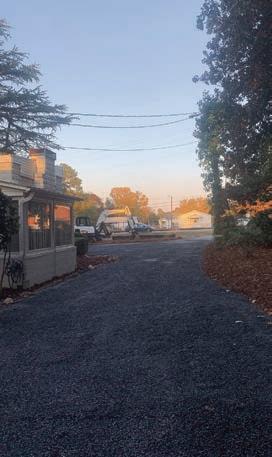






StORy A nd p hOtOGRA ph By tOny CROSS
Almost a decade ago, I began piddling around with a cocktail to honor my father. He served 20 years in the Army as a Special Forces medic. I knew before creating the drink that I wanted to call it The Green Beret.
My next thought was that it seemed appropriate to include green chartreuse in the mix. And whiskey had to be the base. That was a given, since it’s my dad’s favorite spirit. I decided to create a spin on the Boulevardier using equal parts TOPO’s (a Chapel Hill distillery that is sadly no longer with us) Eight Oak Whiskey, cacao nib-infused Campari, and sweet vermouth, rinsing the inside of the rocks glass with the chartreuse. Even though the drink was a hit on our cocktail menu, I wasn’t completely happy with it — the chartreuse wasn’t adding anything to the cocktail. So, I decided to revisit The Green Beret. This go-round, I switched a few things up. First, the whiskey. Rittenhouse Rye is a go-to when I need a whiskey with a backbone, but one that will still let other flavors come through. Next was the chocolate. Instead of infusing cacao into Campari, I opted for Angostura’s Cocoa Bitters, which wasn’t available when I originally created the drink. I fat-washed the Angostura with brown butter. This gives the bitters a creamy texture and adds nuttiness to the chocolate. Lastly, I took organic espresso beans — about one barspoon — and added them to my glass vessel when stirring all of the ingredients. That allows the oils from the espresso beans to make an appearance in the drink. I’m happy to report that The Green Beret earned its promotion.
Tony Cross owns and operates Reverie Cocktails, a cocktail delivery service that delivers kegged cocktails for businesses to pour on tap — but once a bartender, always a bartender.

SPECIFICATIONS
1 1/4 ounces Rittenhouse Rye
1 ounce Campari
1 ounce Carpano Antica Sweet Vermouth
4 dashes brown butter-washed Angostura Cocoa Bitters*
1 bar spoon organic espresso (or coffee) beans
2 dashes saline
Garnish: orange peel
*Brown butter-washed bitters: You can do this to regular Angostora bitters, too. Pour a 4-ounce bottle of bitters into a small glass container. Place 2 tablespoons of unsalted butter in a pan, bringing to a simmer. Continue to cook the butter until it turns brown. As soon as it does, take it immediately off the heat and pour it into the glass container. Give the bitters/butter mixture a quick stir and let cool. Once cool, seal the container and place it in the freezer. Let it sit overnight. The next day you will notice the butter has solidified. Use a knife to break a hole in the butter and strain the bitters out through a cheesecloth or coffee filter (using a coffee filter will take much longer). Pour butter-washed bitters back into its original bottle.
Combine all ingredients into a chilled mixing vessel, add ice and stir until your gut tells you that it’s cold enough and properly diluted. Strain into a chilled rocks glass over ice. Express oils from an orange peel over the cocktail and place into drink. PS

StORy A nd p hOtOGRA ph By ROSe SheW ey
Many of my childhood summers were spent with my mom’s side of the family on the Adriatic coast in Croatia, where lush Mediterranean gardens grow fig trees taller than a Sandhills dogwood. In the late summer my family would harvest several pounds of figs every day from just a single tree. Those of us visiting from north of the Austrian Alps ate figs until our bellies ached.
Figs are, hands down, my favorite late-summer fruit. Or, to be botanically more accurate, inverted flower. Each seed inside a fig corresponds to one small flower contained in a bulbous stem. Call it what you will, figs, with their sweet, jammy texture and signature crunch, are darn exquisite, whichever way you want to categorize them.
To this day, I am surprised to find pricey, imported plasticcased figs in the produce aisles of food markets in North Carolina when our very own state — our own county, in fact — has proven to be an excellent host for fig trees. A local farm on the outskirts of Aberdeen has been successfully growing an entire fig tree orchard for several years, which begs the question: Why isn’t every farm growing fig trees in Moore County? My family would single-handedly keep them in business.
Even if you can’t get fresh figs, you can still enjoy them in other ways. Dried figs make an excellent addition to a homemade cream cheese. This year, I’ve used everyone’s favorite, pimento cheese, as a basis and inspiration for a cream cheese which holds all it promises — a honey- and fig-sweetened, tangy goat cheese and sharp cheddar blend that melts on your tongue. Spread it on sandwiches and crackers or eat it by the spoonful. PS
German native Rose Shewey is a food stylist and food photographer. To see more of her work visit her website, suessholz.com.
3-4 fresh or dried figs, minced (see notes)
2 cups freshly grated extra sharp cheddar cheese
4 ounces goat cheese
4 ounces cream cheese, cut into 1-inch cubes, room temperature
1 teaspoon honey
1⁄4 teaspoon garlic powder
1⁄4 teaspoon onion powder
Freshly ground black pepper, to taste
Salt, to taste
In a large bowl, combine the finely minced figs with cheddar, goat cheese, cream cheese, honey, garlic powder, onion powder, and several twists of black pepper. Beat the mixture together with a hand mixer or by hand with a sturdy wooden spoon until thoroughly combined. Taste, and add more black pepper if desired, and/or salt for more flavor. Transfer the mixture to a serving bowl and serve immediately, or chill it in the refrigerator for up to 1 week. This cheese mixture hardens as it cools; let it rest for 30 minutes at room temperature before spreading it.
Notes: Dried figs work best; fresh figs can be used but the cheese will be softer overall. In a pinch, you can use 1-2 tablespoons of fig preserve instead of dried or fresh figs.











The Sandhills Photography Club was started in 1983 to provide a means of improving members’ photographic skills and technical knowledge, for the exchange of information, and, by club activity, to develop membership potential and public interest in the art of photography. For meetings and information visit www.sandhillsphotoclub.org.






Introducing Penick Village’s Newest Expansion, redefining retirement living and elevating it to new heights.
Introducing Penick Village’s Newest Expansion, redefining retirement living and elevating it to new heights.
Embrace an Active Lifestyle: Indulge in activities at our state-of-the-art Wellness Pavilion, from Pickleball to personal training and more. Each designed to keep you healthy and engaged in the community.
Crafted Residences: Experience the perfect blend of luxury and comfort in our 44 Independent Living residences, thoughtfully designed to provide a stylish space where you can truly feel at home.



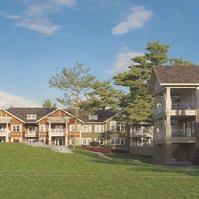
Exceptional Healthcare: The Terrace, our health services building, will be and renovated, ensuring personalized care, whether short-term therapy or long-term care.
Introducing Penick Village’s Newest Expansion, redefining retirement living and elevating it to new heights.
Embrace an Active Lifestyle: Indulge in activities at our state-of-the-art Wellness Pavilion, from Pickleball to personal training and more. Each designed to keep you healthy and engaged in the community.
Crafted Residences: Experience the perfect blend of luxury and comfort in our 44 Independent Living residences, thoughtfully designed to provide a stylish space where you can truly feel at home.
Exceptional Healthcare: The Terrace, our health services building, will be enhanced and renovated, ensuring personalized care, whether short-term therapy or long-term care.
Crafted Residences: Experience the perfect blend of luxury and comfort in our 44 Independent Living residences, thoughtfully designed to provide a stylish space where you can truly feel at home.

Exceptional Healthcare: The Terrace, our health services building, will be enhanced and renovated, ensuring personalized care, whether short-term therapy or long-term care.
Welcoming Environment: Feel right at home from the moment you arrive. Our updated Welcome House and friendly staff are here to greet you and your guests into our community.
Embrace an Active Lifestyle: Indulge in activities at our state-of-the-art Wellness Pavilion, from Pickleball to personal training and more. Each designed to keep you healthy and engaged in the community.
Welcoming Environment: Feel right at home from the moment you arrive. Our updated Welcome House and friendly staff are here to greet you and your guests into our community.
Welcoming Environment: Feel right at home from the moment you arrive. Our updated Welcome House and friendly staff are here to greet you and your guests into our community.
Learn more about our community , where you have the freedom to focus on your wellness and relationships while living life to its fullest . Contact us today. Call (910) 692-0300 , email info@penickvillage1964.org , or scan the QR code to learn more.
Learn more about our community , where you have the freedom to focus on your wellness and relationships while living life to its fullest . Contact us today. Call (910) 692-0300 , email info@penickvillage1964.org , or scan the QR code to learn more.
Learn more about our community , where you have the freedom to focus on your wellness and relationships while living life to its fullest . Contact us today. Call (910) 692-0300 , email info@penickvillage1964.org , or scan the QR code to learn more.













By deBORA h SA lOmOn
Several conundrums pertaining to recent events are driving me bats. Help me reconcile.
The Constitution stipulates an age requirement to run for president. I’m assuming an upper number wasn’t necessary because back then, life expectancy hovered in the 60s. Teddy Roosevelt and Calvin Coolidge died at 60, George Washington at 67, James Garfield at 49. Time to revise?
Why are cars built to achieve 80-plus mph in a few seconds when that speed could cost the driver dollars, points, license revocation? It’s like advertising burglary kits or frozen obesity entrees.
Why have the arbiters of women’s hairstyles decided to uglify their groupies with an oeuvre I call The Weedwacker, which starts with a severe middle part and devolves into angles that frame the face like a barbed wire fence? On purpose. But there they sit, six little TV anchorites in a row, fingers plugged into electric outlets to refresh the coif. To my knowledge, the last gal to get away with this austere look was Mona Lisa.

chilly flight, I was told blankets were only available in business class. So I wrote a letter to the airline’s “customer service” department. They replied with an apology and, of all things, two drink vouchers.
Inflation comes in many sizes. Tucked in the back of my linen closet was a small box of tissues. Must have been there quite a while because the label read 115 tissues. The box I usually buy lists 85 but felt a bit light recently. Sure enough, only 70. The price, however, had crept up. Reduction in contents without shrinking packaging is an old trick now evident in dozens of items, like cookies. Caveat emptor and read the fine print, not that knowing makes a difference.
Thou shalt not drag politics into an “art and soul” magazine. Agreed, but fashion isn’t electioneering. Ever wonder why the vice president prefers pant suits? Hillary Clinton’s situation doesn’t apply. One theory has her being taken more seriously in male attire. Poppycock. European potentates alternate skirts and pants, no problem.
Looming large: the flight plight. Hopefully, the IT crash in mid-July was a one-time deal that shut down American, Delta and others, leaving passengers to sleep on terminal floors. I’m talking about frequent reports of tires falling off, fires breaking out, windows cracking, near mid-air collisions, turbulence injuries, spoiled food. Holy Biscoff! We’re way past recalling bygone days when meals were hot, booze free, “stewardesses” young and friendly, passengers dressed up and on their best behavior. Not even a double Bloody Mary would allay fears when an aircraft packed with 200 sardines drops 10,000 feet in 20 seconds. Maybe calamities were hushed up in the past. But c’mon: On a
Say it isn’t so. The mighty Charlotte Observer will reduce print editions to three days a week starting in September. Some eras end with a bang, others with a whimper, others with the sad rustle of newsprint.
“Elocution” or “diction” training should be a given for cable TV’s talking heads. Once off teleprompter they wallow in “well . . . uh . . . ah.” At that salary level I expect not only fabulous ties and interesting earrings but complete sentences.
Whew! Feels good with those pesky conundrums off my chest. PS
Deborah Salomon is a contributing writer for PineStraw and The Pilot. She may be reached at debsalomon@nc.rr.com.



At Allison and Associates, it’s not the drill, it’s the dentist. Our staff exemplifies excellence in patient care and customer service. We strive to make your dental journey as pleasant as possible and provide a safe landing.
If so, please contact our office for an appointment with one of our hygiene team members. Cumulatively, they have over 100 years of experience in dental hygiene. They will help you regain that “flossing feeling!”


By JASOn h AR pSteR
Notall
Draculas are frightening.
Dracula orchids, also called monkeyface orchids, grow in Central and South America. The genus Dracula means “little dragon” and includes 144 species, many of which have fantastical names of bats, giants, monsters or mythological creatures. Whereas Dracula chimaera and Dracula vampira have appropriate names that fit their grotesque and menacing appearance, Dracula diana stands in stark contrast and is known for its beautiful white flowers.

Daughter of Jupiter and Leto, Diana is a goddess in Roman and Hellenistic religions and is identified with the moon. In Latin, Diana means goddess of light and of the moon, and is often associated with beauty or divinity. In early Roman history, Diana absorbed Artemis’ identity and was later considered a triple deity after merging with Selene and Hecate.
The flowers of Dracula diana are unique to the genus with their predominantly white flowers, which also have a yellow-gold overlay and maroon markings. Some Dracula species have flowers that look like little dragons with their mouths open. Dracula diana has more of a simian appearance; the golden yellow petals resemble eyes, and the pink saccate lip looks like a surprised smile. The flowers are as large as the plant and can reach over 6 inches in length. The native range of this species is West Colombia in
cloud forests at elevations around 4,000 to 5,250 feet above sea level, where temperatures rarely exceed 75 degrees Fahrenheit. In addition to being temperature sensitive, the flowers will collapse if humidity drops below 75 percent.
Dracula diana ‘Southern Pines Deity’ AM/AOS was awarded on Oct. 21, 2023, at the Carolinas Judging Center’s monthly judging. The judges commented on how the caudae, the long delicate tips at the ends of the sepals, were gracefully displayed and noted the fullness of the sepals. The creamy white sepals are covered with fine hairs and have a crystalline texture, which makes them sparkle in the sunlight. The flowers on the plant exhibited had better form and were more proportionate than previous awards. The flowers were also the second largest on record for the species.
In consideration of these qualities, the judges awarded the plant an Award of Merit and scored 84 points, which makes ‘Southern Pines Deity’ the highest pointed award on record. It seems fitting that the best example of this species be named after such a special town. PS
Jason Harpster is an accredited American Orchid Society judge and works at his family’s business, Central Security Systems. He hopes to share his collection of 1,500-plus orchids by starting a botanical garden in Southern Pines.






By SuSA n CA mpBell
As the long days of summer wane here in the Piedmont and Sandhills of North Carolina, we have scores of birds preparing for that long southbound journey we refer to as fall migration. Thousands of birds pass by, both day and night, headed for wintering grounds deep in the Southern Hemisphere. Flocks of medium-bodied shorebirds, dropping down to replenish their reserves, are one seemingly unlikely sight. They may stay a few hours or a few days, depending on the weather and the abundance of food available to them. At first glance, you might think these long-legged birds are lost — far from the coast where a variety of sandpipers are commonplace. But once you take a good look, you will realize these are birds of grassland habitat, not sand flats.

Referred to as “grasspipers” by birders, these species forage on a wide variety of invertebrates found in grassy expanses. They breed in open northern terrain, in some cases all the way up into the Arctic. They are moving through as they migrate to grassland habitat in southern South America. Although some may be seen along our coastline, they are more likely to be found in flocks or loose groups at inland airports, sod farms, playing fields and perhaps even tilled croplands. Come late August and early September, armed with binoculars or, better yet, a powerful spotting telescope, you can find these cryptically colored birds without having to travel too far from home. They are indeed easy to miss unless you know where to look at the right time. Flocks often include a mix of species, so be ready to sort through each and every bird, lest you overlook one of the rarer individuals. When it comes to shorebirds as a group, many of the dozens of species are tricky to identify so, if you’re

relatively new to birding, I suggest you arrange to join a more accomplished birder to start.
The most common and numerous species without a doubt is the killdeer. Its dark upper parts contrast with white underparts, but it’s the double neck ring that gives it away. This spunky bird, whose name is its call, nests (if you can call a rudimentary scrape in the gravel a nest) on disturbed ground such as unpaved roadways and parking lots throughout North Carolina. Flocks of hundreds of birds are not uncommon. Frequently other species are mixed in as well. In the Sandhills, the sod farm in Candor hosts large numbers of killdeer around Labor Day. Check them all and you will likely be rewarded with something different mixed in.

The plover family, to which the killdeer belongs, consists of squat, short-necked and billed birds of several species. The semipalmated plover is a close cousin. This slightly smaller species sports only a single neck ring and curiously, individuals have slightly webbed (or palmate) feet. They can actually swim short distances when in wetter habitat and are thus more versatile foragers.
The most curious are the obligate grassland shorebirds, which include the well-camouflaged buff-breasted sandpiper and the upland sandpiper. Both nest in the drier prairies of Canada and spend the winter months mainly in the pampas of Argentina. “Buffies” are a buff-brown all over and have delicate-looking heads, short, thin bills and a distinctive ring around the eye. “Uppies” are brownish and have small heads as well, but with larger eyes and both a longer bill and longer legs. These two species are thought to be declining — most likely due to habitat loss on both continents.

If you miss the chance to get out in search of inland shorebirds this fall, don’t fret. They will move through again come spring, although in smaller numbers. Winter will take its toll, but those who do make it back our way will be in vibrant plumage as they wing their way northward to create yet a new generation of grasspipers north of the border. PS
Susan Campbell would love to receive your wildlife sightings and photos. She can be contacted by email at susan@ncaves.com, or by calling (910) 585-0574.

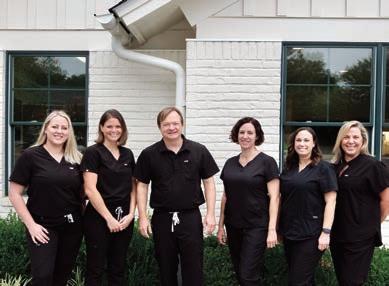



By tOm BRyA nt
“Well,
I really do have a question, Mr. Bryant. Do you actually eat all those little animals you kill?”

I knew that question, or one like it, would come when I agreed to speak at a women’s club. Some of my hunting partners that hang out at Slim’s Country Store had warned me when they heard through the grapevine about the speaking commitment. Ritter expressed it best when he said, “Bryant, those ladies gonna skin you like a possum. You know they’s against guns, hunting, fishing or almost any outdoor sport.”
The meeting with the ladies took place several years ago in a small but prestigious town right across the border in Virginia.
“Yes, ma’am. My grandfather was a stickler for eating anything we brought home. He would stress that the Good Lord gave bounty from the streams and fields for us to use and do so responsibly.
“Also, as I mentioned earlier, right after the War Between the States, folks in the South especially, used wild game to supplement food for the table.”
There was a follow-up. “What animals did you cook and eat, and how old were you?”
It looked as if it was going to be a long question and answer period. I sighed inwardly.
“I started hunting the woods on my grandfather’s farm when I was about 9 and fishing maybe 6 or 7. My first wild game was squirrels. I’d clean ’em and Grandma would cook them in a wonderful rice dish.” I could hear the muted groans in the audience of ladies who had just finished a wonderful chicken lunch.
“As a matter of fact,” I continued, “I brought this along.” I held up my well-worn wild game cookbook from L.L. Bean,
simply titled The Game & Fish Cookbook. “Unfortunately, it’s out of print but can still be found, if you’re lucky, in usedbook stores. There are probably 10 or 12 great recipes in this book for squirrel, but one of my favorites is Brunswick stew.”
Turning to a well-marked page where the recipe was underlined, I quoted from the lead-in to the ingredients.
“Technically this stew is made from squirrel, but it can be made with other meats: rabbit, muskrat, beaver or combinations.”
I held the book open so the ladies of the highest social order sitting on the front row could see that I wasn’t making it up. There were considerable murmurs from the women sitting in the back rows. I didn’t know if they were accepting my story or getting ready to walk out en masse.
“Speaking of Brunswick stew,” I continued, “I have a couple of friends who, in the Southern vernacular, are good ol’ boys, and they make the best stew I’ve ever eaten. They make one that’s really got some shoulders on it. Edwin Clapp and Bandy Herman are what you think of when you picture hunters and fishermen who live deep in the country far away from tall buildings and sidewalks.”
One of the ladies sitting near the back raised her hand, stood up and said, “Do they use what you call wild game in their cooking?”
“I’m gonna be honest with you,” I replied. “Once, when Edwin invited me up to his farm to participate in the annual Brunswick stew cooking, he told me they would be whipping up their concoction in a 30-gallon stew pot. I told him there’s not enough squirrel in Chatham County to fill a pot that size.
“Edwin said they were giving away most of the stew, and that some of his city friends frowned on eating squirrel in anything,
even Brunswick stew. So, on that occasion, just to suit the city folk, they were using grocery store fare.”
I had my iPad with me to show photos of some of the places where we hunted, and I knew there was a good shot of Edwin and Bandy cooking stew, if I could find it. The little computer was new to me — a gift from my bride, Linda — and I had yet to figure out all its intricacies.
It looked as if the ladies were in no hurry to leave, so I directed my next statement to the last questioner. “Ma’am, somewhere in this little machine I’ve got a photo of Edwin and Bandy cooking up one of their big batches of Chatham County Brunswick stew. It shows the huge stainless steel pot they use and the wooden paddle for stirring.”
Not a soul had left, and a couple of the ladies got up from their chairs and edged closer.
“Here it is. Look at the size of that pot,” I said. “And it’s almost filled to the brim.” I passed the iPad around for everyone to see. Several took a closer look before handing it back to me.
A lady on the front row said, “But Mr. Bryant, if you keep killing the animals that you hunt, will they eventually go away? I mean will you deplete the resource?”
“That’s an excellent question,” I replied, and I pulled out my Ducks Unlimited membership card and held it so they could see.
“This organization is the world’s leader in wetlands and waterfowl conservation, and yet they value and enjoy the sport of hunting. The beauty of all this is that we hunters, over 700,000 of us, are the supporters of this institution.” I passed my membership card around the nearest row of ladies.
Our host, a small white-haired matron, stood, raised her hand and took over. “I believe we’ve taken enough time from Mr. Bryant,” she said. There was a smattering of applause and the ladies slowly left the room.
I grabbed my stuff, thanked the ladies in charge and exited the building posthaste. I was surprised to find the elderly matron, the one who asked about eating game, on the steps waiting for me.
“Mr. Bryant, I surely would like to get a taste of Mr. Clapp’s Brunswick stew,” she said, to my surprise.
“I’m afraid this year’s batch is probably all gone,” I said.
She handed me her card. “Well, tell him to put me on the list for next year,” she said and turned to go. “Oh,” she paused as she headed down the stairs, “you can also tell him I wouldn’t mind if it had just a taste of squirrel.” PS
Tom Bryant, a Southern Pines resident, is a lifelong outdoorsman and PineStraw’s Sporting Life columnist.






















By lee pACe
Back in the day when the summertime temperatures in the Sandhills inched into the 90s with humidity to match, and before Willis Carrier’s apparatus for cooling air had become mainstream through the handy and affordable window unit, back when you could fire a niblick or a rifle down the fairways of Pinehurst No. 2 in July with no worry of striking golfer or squirrel, the place to be was Linville.
It was 200 cooling miles northwest from the sandy loam, longleaf pines, white clapboard sidings and green trim of Pinehurst to the rocky outcroppings, rhododendron thickets and grayish buildings made of chestnut bark in Linville.
“Spend the week in Linville and make it a real vacation,” Pinehurst proprietor Richard Tufts advised in a 1942 letter to golfers promoting the Carolinas Amateur Championship, set for Linville Golf Club. “You need the rest, and there is no better place than Linville to take it.”
Pinehurst, Linville and Wilmington were three of the earliest bastions of golf in the state of North Carolina, and the names MacRae, Tufts and Ross are threads that tie them all together. In the late 1800s the MacRae family of Wilmington was instrumental in importing golf from its Scottish homeland, and after Donald MacRae Sr. developed extensive mining interests in the mountains, he believed a recreational menu that included golf would work well at the base of majestic Grandfather Mountain. MacRae and a partner named Sam Kelsey were officers in the Linville Land, Manufacturing and Mining Company, a corporation formed in 1888. Soon the company spent $22,000 to build
the Eseeola Inn, which debuted amid the fanfare of bagpipe music and oxen races during a lavish grand opening on July 4, 1892.
“The Eden of the United States, a Fairy Land without a peer,” crooned an early advertisement for Linville and the Eseeola.
Linville originally had a 14-hole course that was redesigned and expanded to 18 — beginning in 1924 and reopening in 1926 — by Donald Ross, another Scotsman ensconced at Pinehurst since 1901 as its head golf professional, and who also made a tidy sum on the side in golf course design. The club and lodge were managed at one time by the Tufts family, who sent some of their staff to Linville to work when Pinehurst closed for the summer.
Wilmington native Isaac Grainger, a leading official in the Rules of Golf and USGA president in 1954-55, remembered his first trip from the coast to Linville in the early 1900s.
“By train from Wilmington to Goldsboro to Hickory to Lenoir and Edgemont, 24 hours, and then a six- or seven-hour drive by horse and buggy over the mountains at night,” he said. “That began a long series of exciting sojourns in the delightful spot which is synonymous with the name MacRae.”
Hugh MacRae II, great-grandson of the Linville founder, remembers seeing Ross as a child of 7 or 8. “He was a fine-looking man with a tweed cap and tweed suit and knickers and long stockings,” MacRae says. “He had a mustache. He was very pleasant and kindly. His Scottish brogue was very thick and difficult for a child to understand. He was very impressive.”
Though Linville is more than 4,000 miles from the western shores of Scotland, there’s more than a passing connection to the homeland of golf. Scots with names like Kirkcaldy served as early professionals. Today you can get a good breakfast or lunch just up the street at the Tartan Restaurant, and the Scottish Highland Games are an annual summertime staple. Sleep in on a Sunday morning at the Eseeola Lodge and you might be roused by the bagpipe music heralding services at the tiny Presbyterian











chapel across the street.
“Little has changed at Linville from the early days,” MacRae says. “The first hole and 18th hole look nearly as they did in those days. You can drive back into Linville today and almost turn the clock back to the ’20s and ’30s.”
Today Linville Golf Club and Eseeola Lodge retain much of their Old World charm. There are neat rows of cottages lining the fairways to the first, second and 18th holes, each with the ubiquitous “Linville look” of chestnut bark siding. Grandmother Creek crosses the course a dozen times, and the fifth hole kisses against Lake Kawana, the 7-acre lake built for fishing and recreation.
There are few bunkers on the course (two holes have no sand traps at all), and the greens are small and quite the challenge. The blend of poa annua, bent, clover, blue and other indigenous strains is shaved to lightning-quick speeds in the summer, and the dips and hollows around the putting surfaces make chipping and pitching a mental and physical test of planning the angles and then executing the idea.
“Playing at Linville was always a thrill,” famed amateur Billy Joe Patton once said. “It’s a great course, one of my all-time favorites. Like all Ross designs, it’s a fine test; a wonderful, classic course that everyone can enjoy and appreciate.”
The club held a centennial celebration on June 9, marking the day a century earlier when Hugh MacRae felled the first tree as construction began on the course. Members hit balata balls with hickory shafted clubs from the plaque that rests on the right side of the first fairway.
“The slopes, the streams, with wide skies over all,” the founding MacRae said. “And here, content in pleasant sport, we meet our friends and ‘foes,’ and find them hard to beat.”
The golf course is getting a centennial tweaking at the hands of golf architect Andrew Green, who has become one of the go-to guys in the industry for classic course restorations. Green worked for 15 years in course construction, went off on his own in 2017 and was lauded for
$1,150,000
6 Beds
7 Full Baths
Bess Giles (910) 639-5006
MLS 100430225


$650,000
Lee Williams (919) 649-2741
MLS 100447382

$599,000
3 Beds
2 Full Baths
1 Half Bath
Debbie Darby (910) 783-5193
MLS 100429125

Gorgeous remodeled town home with gourmet kitchen. 3 Bedroom, 2.5 baths, this is a one of a kind property that leaves a lasting impression.
$499,500 3 Beds
Debbie Darby (910) 783-5193

$285,000
Debbie Darby (910) 783-5193 MLS 100456904









unearthing Ross’ architectural features at Oak Hill East in Rochester leading up to the 2023 PGA Championship. In a subsequent project at Scioto Golf Club in Columbus, Ohio, he met director of golf Bill Stines, who moved in 2020 to take the same job at Linville Golf Club.
A year after moving to Linville, Stines was discussing the issue of the severely canted 10th green with Linville general manager Tom Dale and club officers, and how to solve the problem of too many putts rolling off the front of the green, 40 yards down the fairway.
“I said I would get the best expert in the business, someone who knew design, construction, agronomy and history to take a look,” Stine says. “That would be Andrew Green.”
The club retained Green in the fall of 2021 to start making plans. Working from Ross’ original course plan in 1924, Green identified the features, dimensions and undulations that had been lost over time and could be restored, ever mindful of equipment and maintenance evolution. The work needed to be done in the off-season so as not to close any part of the course during the height of the summer, so Green worked on seven holes from September 2023 to March 2024. The club is going to double-up on the construction crew this fall and knock out 10 more holes this winter. A more extensive restoration of the 17th hole to adjust fairway and green elevations is planned for the 2025-26 offseason.
That will leave the club with a course offering the ideal combination of Ross’ original design tenets paired with modern agronomy and playability in time to celebrate the 100th anniversary of the conclusion of the great architect’s original work.
“Other places, no matter what age they are, are trying to create history,” Dale says. “That happens on its own. You can’t manufacture it. You just end up with it if you’ve been around long enough.” PS
Lee Pace has written about the Pinehurst experience for more than three decades from his home in Chapel Hill. Write him at leepace7@gmail.com and follow him on X @ LeePaceTweet.













































Toes taste water before it swallows our bodies.
In a waterfall embrace— bones brush against mossy boulders.
Our skin succumbs to unknown atoms when the wild decides where we fall in.
The flow that washed away our sins is saving someone else by now.
Miles away— neck deep in a faith pool, we hold our breath to float above rock bottom.
— Clint Bowman
Clint Bowman’s debut full-length collection of poetry, If Lost, will be published September 5 by Loblolly Press.








The French traditionally design neat, orderly and symmetrical gardens. The English tend to prefer something a bit less formal. Alex Rowland, who lives in Robbins, seemingly uses Wonderland as the blueprint for his, letting a bit of whimsy be his guide.
His home garden, which began as a simple hobby, has blossomed into a vibrant showcase of over a hundred different plants. With the help of his good friend John Boyer, something is always in bloom, but the dahlias — oh, my — stand out as the crowning glory. Clippers lay around the garden and wedged in fences, smells of passion flowers and tomato plants fill your lungs as you walk through. To the average eye the garden might look unruly, but the tangle of veggies and flower blooms seem to complement his dahlias. Like Wonderland, the ordinary rules of order seem suspended here. Curiouser and curiouser.
“You know how they say, ‘If you can’t tie a knot, tie a lot’? Well, that’s what I do,” Rowland says with a chuckle. “Sometimes I forget what I planted where, until it comes up.”
Many of the paths have arbors wrapped with vines, providing almost a 360-degree botanical spectacle as you walk underneath. In a single section you could spot dahlias, okra, peppers and morning glories. Keeping with the normal course of nature, the garden is something of a Darwinian battlefield. “I have to make sure certain plants don’t overtake others,” he says.
His secret is 20 years’ worth of compost in raised beds. He gets truckloads delivered multiple

times a year. The land may have a clay soil base, but even a deep dig in these grounds will now produce rich, dark earth.
Rowland grew up in Southern Pines but moved to Robbins 20 years ago. “It doesn’t even feel like you’re still in Moore County on this property,” he says, recalling how he started renting the farmhouse after placing an ad in The Pilot newspaper looking for something more rural. Today, he owns the 150-acre farm.
The property fits in the horseshoe of Deep River with a house, built in the 1800s, that has been lovingly renovated to retain its charm. The garden is located beside the farmhouse where he lives with his wife, Weynona, daughter, Faith, five dogs, two cats, chickens and a horse. It’s enclosed by a hand-built cedar fence made from trees taken from the farm.
Rowland owns All American Mattress and Furniture and, while he admits to spending as much time in the garden as he does at the office, the garden has begun paying off, too. He delivers the majority of his dahlias to Hollyfield Design. On occasion he’ll bring blossoms


to Sweet Basil or Nature’s Own. His own kitchen island is usually covered with flowers, too.
Some of the blossoms, as large as a dinner plate, have delicate petals creating a layered effect resembling the folds of a luxurious velvet gown. Others, the “pom poms,” are smaller but grow in a ball shape, granting no bad side. The stems alone can be 4 feet tall.
The dahlia varieties can have funky names and what Rowland isn’t sure of, he names himself. In his garden you’ll hear him distinguish “Strawberry Ice” from “Cafe Au Lait” or “Mango Tango.”
While dahlias in the Sandhills prefer the cooler fall weather over the intense summer heat — their colors tend to fade under the relentless sun — their full splendor emerges in mid September, early October. By then, you can expect a full display of colors. While they require a ton of water in North Carolina’s climate, despite the garden’s large size, he prefers watering by hand.




“If you plant sunflowers, they’ll bloom for a few weeks, then they’re done,” says Rowland. “But a dahlia plant? It’ll put out dozens of blooms from one plant once it’s in season.”
Rowland’s dahlias have won numerous ribbons at the North Carolina State Fair. “I have a drawer full, I’m not even sure how many. Going to the State Fair is like going to war with flowers,” he says, laughing. He and his mother, Lorna Lee Matthews, bring a truckload of dahlias each year, like knights arriving for the joust, armed with their vibrant buds.
It’s easy to see how such large, breathtaking displays of nature’s artistry


would win. The flowers stand tall on sturdy stems, making them a commanding presence in any floral competition.
Though proud, Rowland loves the thrill of experimenting; he has even begun cloning certain flowers. For him, the true joy lies not just in the accolades but in the endless possibilities of what his garden can do. “I used to love taking photos of dahlias and it turned into an obsession,” he says. “I honestly hated gardening. Now look at me.”
Rowland’s ideal times of the day are sunrise and sunset, watching how the golden light transforms the land. He often enjoys the slow quiet of the morning with a cup of coffee as he tends to the weeds. Why, sometimes he may have believed as many as six impossible things before breakfast.
Emilee Phillips is PineStraw’s director of social media and digital content.





By Bill Case
My compulsion started in the late 1950s, around age 9. I’d spring out of bed and bolt to the front door where our daily newspaper, the Cleveland Plain Dealer, awaited. I’d grab the sports section and absorb its contents, especially baseball and golf. When it came to the statistics, no pitcher’s earned run average or touring pro’s also-ran finish was too obscure to escape my attention.
I not only studied the results of PGA Tour events, but also those of the Ladies Professional Golf Association. Mickey Wright, Betsy Rawls and Marlene Bauer Hagge were among the LPGA stalwarts I became familiar with, all eventually inducted into the World Golf Hall of Fame.
I also recollect Plain Dealer accounts concerning another LPGA player of that era, Wiffi Smith, whose tournament successes from 1957-1960 rivaled those of her legendary contemporaries. She won eight LPGA tournaments before turning 24 — the same number Jack Nicklaus would win on the PGA Tour by that age though, in











The many odysseys of Wiffi Smith
fairness, Jack’s victories included three major championships. I remember photos of a smiling, and often victorious, Smith. Sturdily built with curly auburn hair, Wiffi’s friendly freckled face stuck in my memory bank.
Mentions of Smith abruptly disappeared from the sports pages around 1960. She was little more than a distant memory when I began research for a story involving the Moore County Hounds. In the process of delving into the archives of The Pilot, the name Wiffi Smith kept popping up in stories from 1963 to 1981.
A 1976 Pilot story confirmed the woman in question was golf’s, and my own, missing Wiffi. “Behind the continuing reputation of the Moore County Hounds,” wrote Mildred Allen, “is a champion among champions — Wiffi Smith, who after winning her place in the golfing world before permanently damaging her left hand in a minor accident in 1959, found a second love when Mrs. Ginnie Moss invited her to manage the kennels and become Second Whip for MCH.”
Allen’s piece described Smith’s myriad duties at Mile-Away Farm, MCH’s home. Arriving at daybreak, she pitched hay, mucked stalls, personally trained the hounds and, once hunting season was underway, saw to it (as whipper-in) that the hounds,
when afield, remembered “what Wiffi Smith . . . has taught them.” Wiffi was quoted as saying, in training the hounds, “Love is basic to discipline. They’ve got to love you enough to do what you ask of them or demand of them.”
Another Pilot article, this time from 1981, reported that Smith was leaving her position as “kennel huntsman” at MCH and returning “to her first love — golf.” She would be offering private lessons and “three-day intensive golfing seminars.” It was not an entirely new gig for Smith. During her tenure at MCH, she moonlighted at Pine Needles Lodge and Golf Club, giving lessons to women in Peggy Kirk Bell’s Golfaris.
Smith’s segue from championship golfer to foxhunting maven and back to golf teacher had the makings of a fine story, but she was long gone from Moore County. An internet search yielded a 2005 blurb identifying Smith as a golf instructor in Darrington, Washington. Efforts to locate her there were fruitless. Moreover, the commonness of her given name, Margaret C. Smith, rendered directory searches a hopeless endeavor.
Finally, a circuitous route involving the MCH’s current whipper-in, Mel Wyatt — who said Smith is fondly remembered in MCH circles —and a veteran MCH member, Leonard Short, produced a telephone number in Edgewood, New Mexico, where the 87-year-old now resides with her younger brother, Latimer Smith Jr., and his wife.
In several phone conversations, Smith engagingly reminisced about her life, a mostly fun-loving and joyous ride, from her perspective. “But what about the injury to your hand that derailed what could have been a Hall of Fame golf career?” I asked. “That can’t be a happy memory.”
“I wasn’t happy about it,” Smith said, “but it led to great times in Southern Pines with the hounds, Pappy and Ginnie Moss, and the Bell family. It was a wonderful time to be in Southern Pines. When things happened in my life that sent me in a different direction, it has led to something wonderful.”
Smith’s attitude regarding life’s curveballs is a trait shared with her mother. Mary Decker Smith was a brilliant woman of many talents — architect, librarian, artist, naval navigator and sportswoman. While married to Latimer Smith Sr., and living in Redlands, California, she was employed as a librarian at Vandenberg Air Force Base. Later, she would serve her country in seemingly more clandestine employments in Mexico, England and Spain. Wiffi is uncertain as to her mother’s precise role in these foreign assignments but suspects her stint in Mexico involved keeping tabs on former Third Reich military officers who hurriedly relocated to that country in the aftermath of World War II.
This international woman of mystery was a vagabond whose adventurous avocations took her far from home. While Latimer Sr., employed as a designer of airplane parts, stayed behind at the couple’s home in Redlands, Mary pursued a special interest in ancient Central and South American civilizations, visiting ruins accompanied by archaeologically minded friends who shared the same passion. During a 1936 excursion to a remote village, Mary encountered a tribal healer who, after poking her midsection, exclaimed “Wiffi!” which, in the tribe’s dialect, meant “something is coming.” The healer proved prescient. That “something” was
Margaret C. Smith (aka “Wiffi”), who arrived that September.
Latimer and Mary’s marriage ended in divorce when Wiffi was 11. Mary and the children left Redlands and moved to Guadalajara, Mexico, where the pre-teen Wiffi learned Spanish in short order. “At one time, I was fluent in three languages (English, Spanish and French). Now I can’t speak any of them,” she says with a chuckle.
The young Smith relished riding horses, playing piano and taking ballet. She excelled in all sports, and dreamed of emulating the accomplishments of Babe Didrickson Zaharias, one of the greatest female athletes in history. She took up tennis, but it proved frustrating finding competition in Guadalajara. Mary suggested Wiffi try her hand at golf, a game she could always play by herself. Moreover, golf aptitude was in the family genes. Latimer Sr. had once entertained the notion of turning professional. After Mary joined the Guadalajara Country Club, Wiffi, by then 14, took up the game in earnest.
Within a year she was shooting close to par. She wasn’t just good; she was long. Generating power from her solid 5-foot, 6-inch, 160-pound frame, Wiffi could smash her driver 265 yards. At 16, she entered the 1953 Mexican Women’s Amateur and won going away, routing her opponent, Luz de Lourdes, 7 and 6 in the finals. Later that summer, she won low amateur laurels at the World Championship of Golf in Chicago, where she met her idol Zaharias, then made a major splash by reaching the semifinals of the U.S. Women’s Amateur.
Despite this early success, Smith’s short game, by her own
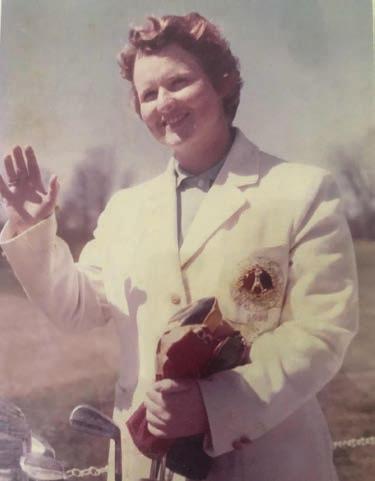

admission, lacked finesse. To address this deficiency, she took lessons from renowned teacher and two-time PGA champion Paul Runyan in Pasadena. “He told me to hit some pitch shots to the right side of the green, and make them bounce left toward the pin, and vice-versa,” recalls Smith. “I couldn’t make my pitches bounce the way he wanted so I said, ‘Let me watch you.’” After Runyan hit a few shots, all of which bounced in the desired direction, Smith knew what she needed to do. Mimicking the Hall of Famer’s technique, she quickly had the ball bouncing as requested. “He didn’t need to tell me how to do it, I just did it.”
Smith played several important amateur tournaments in the first quarter of 1954, including Pinehurst’s North & South Championship, but her golf development slowed when, along with her mother and brother, she moved to a small cottage in the village of Wincham, England. There were few opportunities to play competitively, but Smith kept her game in shape at nearby Windwhistle Golf Club, a modest nine-hole layout where sheep grazed on the course. Her brother shagged her practice balls.
While Windwhistle was not a memorable test of golf, it did possess scenic beauty. “The course was high up overlooking the countryside. I watched foxhunts down below,” remembers Smith. “I could see the fox, the hounds and the horses, all in full flight.” It would be a harbinger of things to come. Smith did, in fact, enter the Women’s British Amateur in July 1954 and played creditably, winning two matches before bowing to Canadian finalist Marlene Stewart.
Mary instructed her daughter to choose either golf or college. She could afford to subsidize one or the other, but not both. Smith had arrived at a fork in the road. Gaining admission to college appeared an iffy proposition, since Wiffi had not stayed in one place long enough to earn a high school diploma. Motivated by her desire to win the U.S. Junior Girls Championship — the 1954 championship would be her final opportunity to compete in
it — she chose golf.
After sailing to America, the teenager blew away the field. Golf World reported that Wiffi “waltzed through four matches, five or more up in each of them.” The magazine labeled her “the greatest traveler among the teenage starlets,” given the fact that in the previous year alone, she had “moved from her home in Guadalajara, Mexico, through Florida, Georgia, the Carolinas, the British Isles and sundry points west, amazing all with her shot-making.”
Among those Smith impressed was Peggy Kirk Bell, who along with husband Warren “Bullet” Bell, the Cosgrove family and Julius Boros, had recently purchased the Pine Needles golf course with the objective of transforming it into a resort property. Peggy Bell provided a helping hand to many talented female golfers, and Smith was among the first beneficiaries. The Bells hired her to work in the office, where her duties left ample time to play with guests and work on her game.
During one practice session at Pine Needles in March 1955, Smith experienced a golfing epiphany that astounds her to this day. “I was hitting 6-iron shots getting ready for the North & South at Pinehurst, when something magical came over me.” Suddenly, it seemed impossible to mishit a shot. “I didn’t exist anymore,” she said. “Somebody else was hitting the ball. It was perfect. Today, they would call it the zone.”
The euphoria carried over to the North & South. Smith played beautifully throughout, beating U.S. Amateur champion Barbara Romack in the semifinal, then cruising to a 3 and 2 victory over Pat Lesser in the championship match. The victory cemented Smith’s status as a top amateur and resulted in her selection to the 1956 United States Curtis Cup team.
The Bells were proud of their 18-year-old protégé and protective of her. They became a second family for the young woman. When the Holden family, owners of the St. Clair Inn in Michigan, hired the Bells to manage their property during the summer of 1955, they brought Smith with them to work in the inn’s office.
During that summer Smith also grew close to the Holden family and babysat for Bob Holden’s children. “Bob was a wonderful man,” she reflects. “His whole family took me in and helped me financially and encouraged me with all my endeavors. I learned to dance in their kitchen.” St. Clair became her new home. Later, when the Holdens sold the inn and built a hotel property in Orange, Texas, Smith moved to the Lone Star State with them.
Playing in the ’56 Curtis Cup proved a godsend. Though the American side was defeated by Great Britain and Ireland at Prince’s Golf Club in County Kent, England, Smith won both of her matches, including a 9 and 8 beatdown of singles opponent Philomena Garvey. The following week she crossed the English Channel to play in the French Amateur and won that, too. Smith

capped off her remarkable three-week run by capturing the British Women’s Open Amateur at Sunningdale, dusting her finals opponent Mary Patton Janssen 8 and 7.
After returning to the States, Smith entered the TransMississippi Amateur held in October at Monterey Peninsula Country Club in Pebble Beach. She won again in lopsided fashion. The highlight for Smith was having her father by her side throughout the tournament. “I loved my dad, but we didn’t get to see each other much,” she says today. “Having him see me win at Monterey meant a lot.”
But for Smith, the memory of this reunion would turn bittersweet. After his lengthy drive home, Latimer Sr. felt ill. The following morning, the 47 year-old was found dead, the victim of an enlarged heart.
The combination of amateur successes and her dad’s death caused Smith, then 20, to consider turning pro and joining the ranks of LPGA Tour players. She announced her intention to leave the amateur ranks and play the LPGA’s 1957 tour schedule. The Bells hooked Smith up with Spalding’s staff of touring pros. “That got me balls, clubs, bags, tees, shag bags and 3,000 bucks,” says Smith.
While lodging with the Bells during the holiday season, Wiffi prepared for life on tour. A priority was finding a car to drive to the first event, the Sea Island Open in Georgia. She became smitten with an ancient auto on display at the local Ford dealership — a 1928 Model A Ford. Told the car was privately owned and not for sale, Smith refused to take no for an answer. She tracked down the flivver’s owner while he was playing a round of golf at Pinehurst No. 3 and bought the auto for $1,000 before he could add up his scorecard.
On the 400-mile drive to Sea Island, the Model A sputtered to a stop in Sumter, South Carolina. The needed distributor parts to repair the antique couldn’t be found, but a resourceful mechanic managed to handcraft a fix for $17. Smith was back on the road. If trusting the roadworthiness of a 30-year-old auto seemed questionable, the incident did gain Smith (and the LPGA) a splash of publicity in Golf World and other publications. It didn’t hurt that she finished fifth in her debut.
Smith was the only rookie to win on tour in ’57, at both the Dallas Open and the United Volunteer Services Open in San Francisco. And she came close to winning three LPGA major events, finishing second to Patty Berg in the Western Open, sec-
ond again at the LPGA Championship (won by Louise Suggs) and fourth in the Titleholders Championship (Patty Berg won again) at Augusta Country Club.
While it’s not unheard of for tour pros of either sex to begrudge the success of a rookie, most of Smith’s contemporaries were charmed by her personality and appreciated her go-for-broke style. “She was something you couldn’t imagine,” recalled Polly Riley. “She’d take chances with shots. We’d think, what on earth? But she’d pull them off. It was almost as if she wanted to see how many situations she could escape from. She was something wonderful.”
Smith’s devil-may-care antics off the course brought smiles to her peers and the public alike. “We’d look up and she’d be walking on her hands, or trotting along on someone’s horse, or at a party sliding down a banister,” said LPGA founding member Betty Jameson. “She was everyone’s young hope, but in the form of a mischievous angel.”
In 1958 Smith captured her third LPGA title at the Peach Blossom Open at Spartanburg Country Club in South Carolina in addition to a pair of top seven finishes in majors. She switched to a more conventional automobile — a Volkswagen bus — but that choice proved a bit quirky, too, when she outfitted it with a piano. She could also play the violin and cello. Another Smith gambit involved the acquisition of Flashy Mike, a parade horse she trailered with her on tour. When Wiffi participated in pre-tournament clinics, she would ride up to the tee on Flashy Mike to the delight of the spectators.
Eventually, the hauling of and caring for Flashy Mike became a distraction, and Wiffi needed a stable for her horse. Peggy Kirk Bell suggested her friends, the Mosses, might be willing to take care of the horse at their Mile-Away Farm outside Southern Pines. Ginnie Moss was reluctant to house a parade horse with her foxhunters but, as a favor to Peggy, acquiesced. When not on tour, Smith would frequent the barn at Mile-Away, attending to Flashy Mike

and visiting the Mosses. She also befriended numerous MCH members. Smith grew to love the Sandhills horse country, and with recently inherited family money, purchased 82 acres of what Golf World described as “wild tree-covered land,” outside Vass. She envisioned building a cabin and stable on the remote property.
Country life would have to wait because Smith’s golf career was in full swing. Her 1959 LPGA season got off to a rousing start. She won the Sunshine Women’s Open in February, and a month later led the coveted Titleholders’ championship in Augusta with one round to play. But a spontaneous whim would prove costly. Following the third round, Smith spotted a caddie’s motor bike in the Augusta Country Club’s parking lot. She asked if she could take it for a spin. “Sure,” the caddie replied, “but be careful because the brakes work the opposite of a motorcycle.” Once in motion, Smith couldn’t stop. She ran into the back of a car and was thrown over the vehicle’s hood, sustaining a severe injury to her left wrist.
The nagging pain caused Smith to struggle in the final round and she tumbled to third place with a closing 77. Smith continued on tour, despite increased difficulty in setting her wrist at the top of her swing, and generally managed good finishes. In April, she won again at Spartanburg. By then the tournament had been renamed The Betsy Rawls Open.
At the end of ’59, Smith underwent surgery for her wrist in California, but it was still hurting as she embarked on her 1960 LPGA season. Adjusting her grip to alleviate the discomfort, Smith won the Royal Crown Open in March at Columbus, Georgia. Its top prize of $1,330 was the largest purse she would win on tour. In May, she won again at Spartanburg. Remarking on her trifecta, Smith said, “I think I’ll take this course home and put it in my backyard.”
In July, Smith fashioned two good finishes in major events, a fifth place in the LPGA Championship and sixth in the U.S. Women’s Open. In August, she won her eighth and final event on tour, the Waterloo Open, but her wrist was getting worse, not better. After she shot a first round 79 in late September at Memphis, the nagging injury forced her to withdraw from the tournament. Her announcement one week later was a jaw-dropper. Smith said her hand issues would prevent her from playing competitively “for at least two years” and that she was leaving the tour. “Under these conditions, I can’t play my best and I want an education anyway,” said Smith. “Golf is getting to be hard work, and I love it too much to allow it to affect me in that way.”
Then a further shocker. “I have written to the USGA applying
for amateur status. Maybe someday, I’ll be able to play in the national amateur.”
Even as Smith decided to retain her professional status, her wrist worsened. “I couldn’t lift a piece of paper,” she says. Despite two surgeries, it was never the same. Though the wrist eventually improved enough for Smith to play good golf, she was unable to regain the power that allowed her to play great golf. One final sentimental appearance in Spartanburg in 1964 was her last LPGA tournament.
Off the course, Smith pursued her education at Western New Mexico University in Silver City, able to enroll despite her lack of a high school diploma. She studied at WNMU for three years, but left school short of the requirements for graduating. “I got all upset with a boyfriend and a couple of teachers,” she says.
Hoping to land a position at Pine Needles, she reached out to Peggy Kirk Bell in June of 1963. There weren’t any jobs available, but Bell suggested Smith contact the Mosses at MCH. “They said, ‘Come on over. Work in the barn.’ Eventually, they thought I could feed and take care of the hounds,” Smith recalls. She adapted to the job with relative ease. “One of the hardest things was learning each individual hound’s name.”
Though Smith had not previously engaged in foxhunting, the Mosses knew an excellent rider when they saw one. When she was young Smith rode frequently on her cousins’ 10,000-acre ranch in New Mexico. Soon, she advanced up the MCH staff’s pecking order to be the hunt’s second whipper-in. Riding to the hounds and keeping the canines on task proved to be an excellent outlet for Smith’s sporting side.
There’s still a tree on the Walthour-Moss Foundation known simply as “Wiffi’s Tree,” the scene of an accident involving her. “During hunts on the foundation, I kept running into branches of this tree with my hat,” says Smith. “I decided to cut it down.” Perched on the back of a truck, she sawed off an offending limb


but, when it fell, it hit the side of the truck and Wiffi, too. She managed to heave the whirring chainsaw away from her body but the falling branch broke her wrist — the left one, of course.
With the assistance of her co-workers and milled floorboards from trees on the Moss property, Smith built her dream cabin on her 82-acre parcel. Her friends relished their visits to the pastoral retreat she called Faraway. “They’d get so relaxed, they’d all fall asleep,” she says.
And the Bells still called on Smith to help out at Pine Needles, sometimes at the oddest of hours. “I remember Peggy calling me at 2 a.m. and pleading with me to show up at 8 a.m. the next morning to help with a group,” says Wiffi. “I told her I couldn’t because of having to do my morning chores at the farm. She said, ‘Can’t you do your chores earlier?’”
Smith continued in her roles at Mile-Away and with the hunt through the 1970s. After Pappy Moss died in 1976, wife Ginnie took over his role as MCH’s Huntsman. Within a few years, Mrs. Moss decided to leave that post and thus MCH looked for a new “Huntsman” to replace her. Smith hoped she would be considered for the position, but MCH instead chose a veteran professional who personally took charge of kennel operations, thus replacing Wiffi. Though she continued to perform other farm-related work for Mrs. Moss at Mile-Away, Smith’s reduced workload enabled her to devote more time teaching at Pine Needles alongside other noted golf instructors including Sally Austin and Ellen Griffin. Wiffi made teaching visits at Ben Sutton’s Golf School in Ruskin, Florida, and also served as a golf teacher at St. Mary’s school in Raleigh.
Then, in 1987, Smith encountered a group of visiting women golfers from Port Townsend, Washington, a small village on
a peninsula jutting out into the Pacific Ocean. The more the women raved about Port Townsend, the more Smith became intrigued. “I had mountains and the Pacific coast on my mind,” she says.
Smith and a friend decided to check out Port Townsend but instead found themselves in Darrington, Washington — an inland, rural locale, and hardly a golf hotspot. There was one nine-hole course. Smith was enamored with Darrington’s ambience, however, and elected to move there. She gave lessons at the local driving range and became a traveling instructor at various Penny Zavichas Golf Schools throughout the West. She lived in Darrington until her move to Albuquerque to join her brother and his wife.
One cannot help but wonder what Smith might have achieved in golf absent her injury. “She was going to be a fantastic player,” said Hall of Famer Marilyn Smith. Peggy Kirk Bell said Wiffi “had one of the greatest golf swings and was longer than Mickey Wright.” Despite her extroverted, playful personality, Smith retreated from public view, happily living in remote areas, surrounded by pastoral beauty.
Having heard much about her cabin in Vass, I wanted to see it for myself but the property didn’t have a street address when Smith owned it. Frustrated in my efforts to locate it on my own, I called Smith from my car while driving slowly west on Youngs Road. I read off the names of the intersecting roads.
“That’s it. Turn left!” she finally urged.
I made my way to the front door of a log home where I was greeted by the owner, Bonnie Caie. “Did this cabin once belong to Wiffi Smith?” I asked.
“Oh, yes, and for the 25 years we’ve owned this place I’ve always hoped she might stop by and tell us about her time here,” said Caie.
“Well, I’ve got Wiffi right here on the phone. Talk to her.”
The two women chatted until my cellphone nearly ran out of juice. As they talked, I gazed around the property, mesmerized by the shimmering pond, the well-tended paddock, and towering pines. It was clear what a wonderful, restful retreat Wiffi had built. When later I mentioned this to her, she asked me, “Did you fall asleep?” PS
Pinehurst resident Bill Case is PineStraw’s history man. He can be reached at Bill.Case@thompsonhine.com.

By Claudia Watson
Photogra Phs By John gessner
On the outskirts of Carthage, a nondescript dirt road leads to a hidden gem. Surrounded by a tapestry of pines, native oaks, vibrant sassafras and fruit-laden persimmons, the landscape is a remarkable sight in late summer. A weathered sign bearing the word “Flowers” hints at the destination: Shady Maple Farm.
Farther down the long road, you get a glimpse of what is ahead — a breathtaking wildflowers-filled space. And in the heart of it all, a woman in a big straw hat tends her flowers. When Jennifer Donovan and her husband, Aloysius, moved to this parcel of land in 2021, it was a blank canvas. The 67-acre farm inspired them to follow their love for the outdoors and simpler times.
Decades ago, the 80-year-old homestead was timbered. Still, it held great promise with two natural ponds and nearby wetlands that drain into Dunham’s Creek. “I didn’t have a grand plan, and so it evolved,” Donovan says. “It started with a small plot that I planted and filled with summer annuals just so I could learn.”
Weeks later, while driving through the country, the couple spied three, “unused,” envy-inducing hoop houses in a distant field. They finally mustered the courage to ask the owner if they could buy them.
“He agreed, but on one condition: We had to dismantle and transport them ourselves. They were a fraction of the original cost and certainly worth it,” says Donovan, recalling the first hurdle in their journey to expand the farm.
It took some effort, but they assembled the largest of the three hoop houses, providing 2,000 square feet of protected growing space for her spring crop for the past three years. “It’s a joy to work there in the winter. It’s warm and full of sunlight, and I can roll the sides down if it gets too cold and still get work done,” she says as she nips a flower stem.

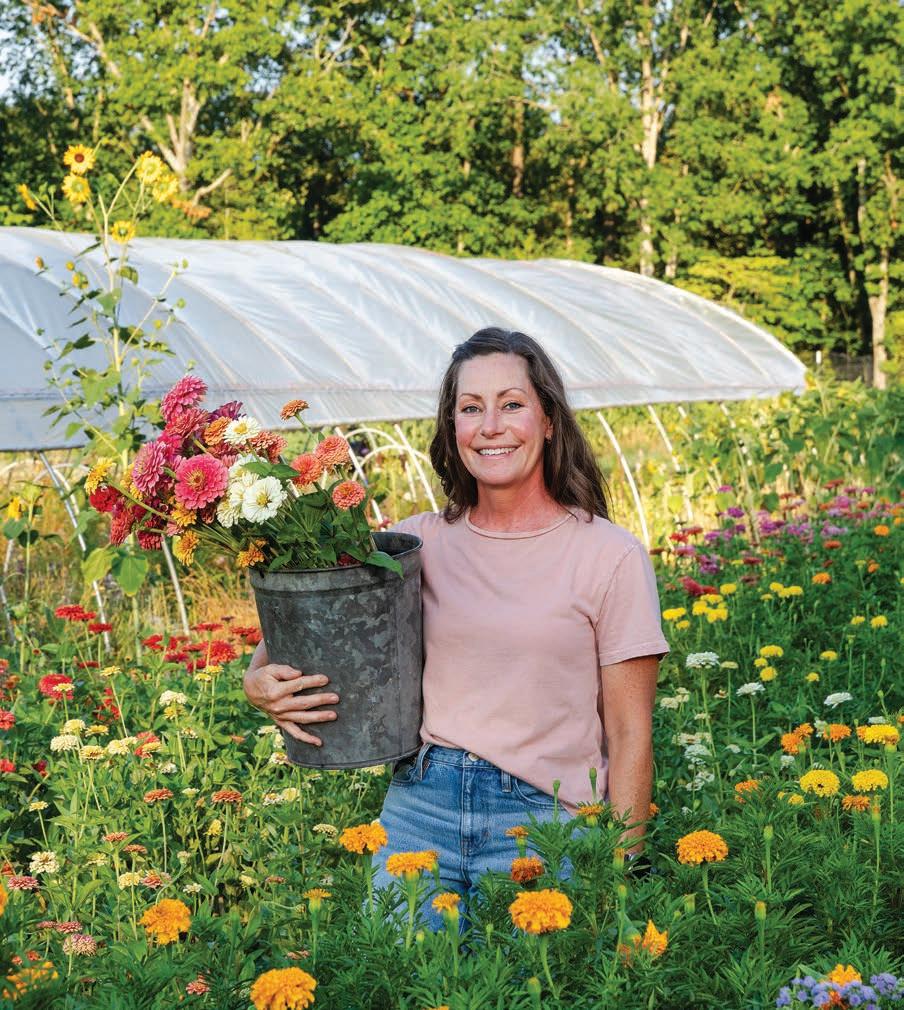

Working in the dirt has always been part of Donovan’s life. A native of Carthage, she graduated from Union Pines High School before attending East Carolina University. During the summers, she’d mow greens and fairways on local golf courses, a job she enjoyed, leading her to transfer to N.C. State University, where she obtained a degree in agronomy.
“I wanted to understand the soil and how it needed to be healthy, so I focused on environmental stewardship classes. That education, and later, earning my N.C. Cooperative Extension Master Gardener certification, gave me a sincere appreciation for our living soil,” she says. “Putting down roots here led to my flower farm dream. I knew when we bought the land that I’d grow something, but I didn’t know what until I saw information online about cut flower production. I love flowers, and they are a product that’s needed year-round.”
So she signed up for an online course in fresh flower production. “I was hooked, obsessed, consumed,” she says. “I couldn’t wait to get started. As soon as I could break ground, I planted that small plot of flowers.”
Donovan never looked back. She started seeds in late fall of 2020 and began selling flowers in the spring of 2021. Despite COVID, she forged ahead, setting up her floriculture business plan and website, and finding novel ways to sell her flowers in a
market segment that will generate $52 billion in sales in 2024.
Driven by people’s increased use of flowers and beautiful plants to liven up their homes and businesses, cut flowers dominate the floriculture market. North Carolina is one of the top 10 states in the U.S. in their production, indicating the enduring appeal and demand for floral beauty.
“Flower farming takes a lot of planning and physical work to succeed,” Donovan says. “I reach my market in a variety of ways, including offering flower subscriptions and joining the local farmers markets. During COVID, when there weren’t many farmers markets, we salvaged what we could from the remnants of the old farmhouse and repurposed them to make a self-serve honor system flower stand.” Donovan points to the stand next to the wildflower garden and their home. “People were very happy to come here to buy flowers to brighten their days.”
Surprisingly, she had not grown anything from seed until they moved to the farm. Donovan laughs at it, too. “I never thought I’d be a flower farmer, but it makes sense with my love of the outdoors and my interest in caring for the environment. For me, it is a perfect match,” she says.
The small-scale family flower farm is no-spray, no-till, and focused on organic growing practices. “December and January are my two months to try and get the farm straightened out,” she says,

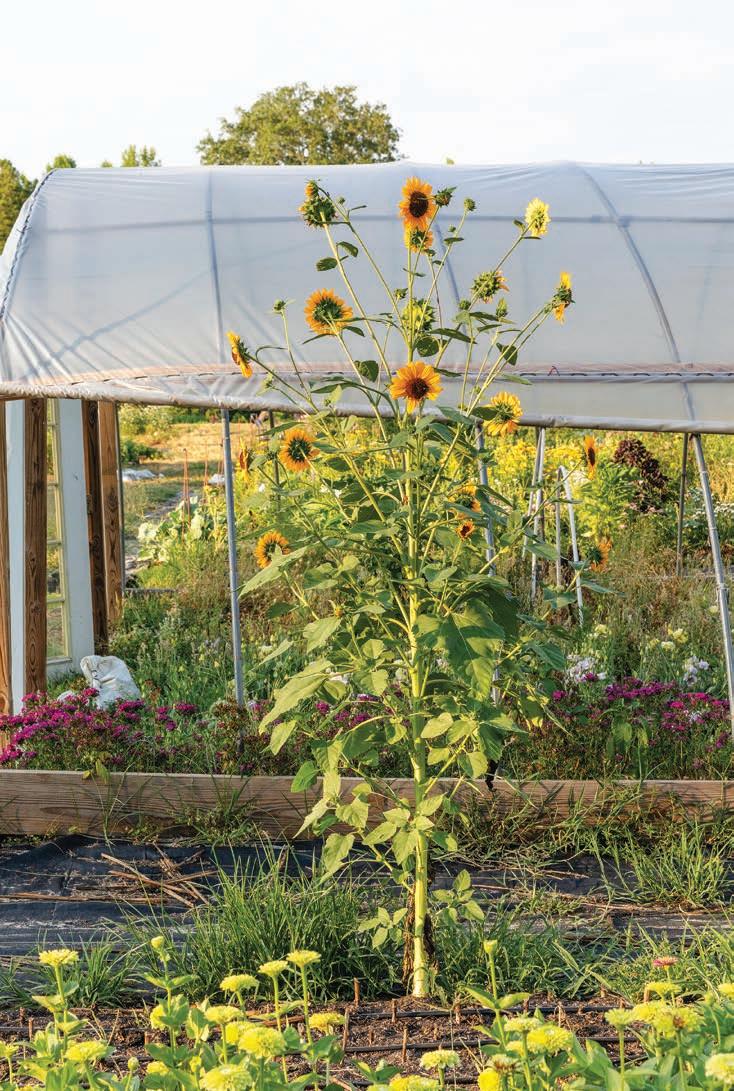
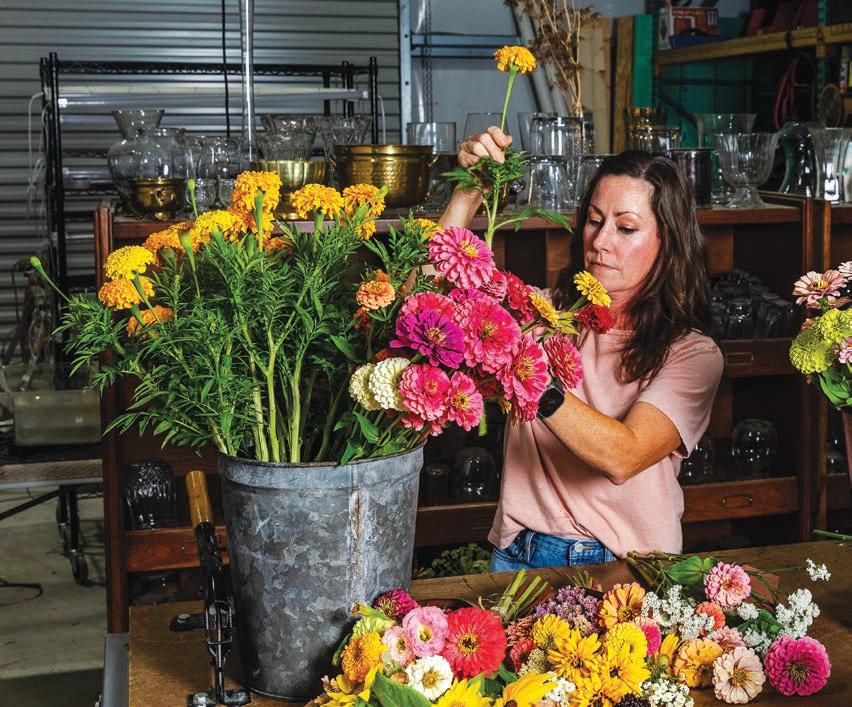
anticipating the work ahead. After a harvest and before transplanting or seeding another crop, she cuts back or mows down the stems of the season’s plant material and covers them with silage tarps for two to three weeks. She removes the tarps and adds a layer of heavy compost on top.
Another part of the process is determining the number of flowers needed for each season. Donovan uses succession planting to ensure she grows a specific number of stems to fulfill her subscriptions and customers at the farmers market.
“As a one-woman show, efficiency is key,” she says. “Once the season begins it’s like being a hamster on a wheel.”
Flower farming is a time-sensitive operation, and if planned and executed correctly, all those long days in the dirt bring a
steady stream of thousands of fresh flowers for her customers. Spring brings the first flush of colors: David Austin roses and the overwintering veronica, salvia, sedum, yarrow, sweet peas and mountain mint — which gets its own box to keep it manageable.
Her 2 acres of flower fields are a veritable candy shop of colorful choices. Versatile plants, including biennial Canterbury Bells (Campanulas) and snapdragons, provide an informal cottage look when intermixed with other plants.
Elegant Bupleurum ‘Griffithi’ with its bright chartreuse blooms combines well with jewel tones, the simple, clean white, of False Queen Anne’s Lace (Ammi majus), and Bells of Ireland. Highly fragrant stock (Matthiola incana), forget-me-nots, poppies and spiky delphiniums are prized plants that thrive in cooler

weather. And magical ranunculus, born from small octopusshaped corms that continue to generate stems after being cut, are among her spring favorites.
Donovan loves tulips, but not standard tulips. “I’m drawn to the unusual types that are showy and make a bouquet stand out, with fringed or pointed petals, and the double-flowered,” she says. “Some are so ruffled and full they’re mistaken for peonies.”
Donovan points to a recently weeded row marked with pink flags in the middle of the flower rows. “I’m cultivating 10 to 12 varieties of herbaceous perennial peonies that are suitable to our climate. There are 100 in that row and 1,000 in the ground. I flag them, so I don’t need to find them each time I use my stirrup hoe to weed. I don’t want to cut off the little eyes on the crowns,” she
says, noting those eyes generate a mass of new upright shoots.
For the past two years, she has disbudded the peonies to allow a young plant (aged 1-3 years) to strengthen. The most important part of the disbudding ritual is timing. “As soon as I see a bud, I cut it off,” she says. “It’s a sacrifice, but what’s needed to get those deep tuberous roots to focus on storing moisture and food. That growth will chug out the thick foliage and the large bountiful blooms I’ll have in another year or so.”
Early summer brings the dramatic globes of allium, perennial phlox (Phlox paniculata) and black-eyed Susans (Rudbeckia). Once the ground is warm, she plants 600 sunflower seeds every Monday. “Who doesn’t love a sunflower?” she says, spying ladybugs and hovering dragonflies on her healthy crop.
Late summer is usually when a garden runs out of steam. But that’s when the flower harvest at Shady Maple Farm hits its crescendo. It is a breathtaking display of color and abundance, a true testament to the farm’s thriving nature. Zinnias, celosia, amaranth, marigolds, summer snapdragons, heirloom mums and another succession of sunflowers brighten the landscape. But it is the dahlias that elicit a strong emotional response from many.
“Dahlias are so unique, with all shapes, sizes and colors imaginable,” Donovan says. “Plus, one dahlia tuber makes many more tubers in the first season. They never disappoint and are the workhorses.”
Her favorite dahlias include ‘Cafe au Lait’ and ‘Break Out,’ renowned for their creamy blooms in soft pink, beige and peach that make romantic summer bouquets. ‘Lavender Perfection’ is a fully double flower with huge lavender-pink blossoms that can grow 40 inches tall. Dahlia ‘Platinum Blonde’ resembles doubleflowered echinacea with fuzzy buttercream centers surrounded by bright white petals. Pollinators like bees, butterflies and hoverflies are drawn to dahlias’ vibrant colors and diverse forms, finding sustenance from mid-summer to frost.
In May she plants a mass of dahlias to take her through the fall farmers markets, where she sells flowers from her vintage-style bus that she’s named Bloom. “I love this bus,” Donovan shouts while unloading buckets of freshly cut flower stems and wrapped bouquets. “It keeps me efficient. Farming is figuring out how to make it work, understanding where to put the cover crop and get the succession right for smooth transitions.” It requires tough decisions, she notes, adding that the farm’s outdoor capacity has by no means reached its limits. Next year, she will add more rows and 3,900 more plants.
“This farm makes me appreciate the wisdom of farmers who’ve been doing this for a long time. For me, to finally get a system in place feels good,” she says as the sun begins its descent and the flower fields take on a golden glow.
After a long silence, she smiles, grateful for the day. It takes energy, determination and sensitivity to nature’s flora and fauna. Still, for Donovan, it is all in a day’s work — a day that makes her proud.
Claudia Watson is a frequent contributor to PineStraw and The Pilot and finds the joy in each day, often in a garden.

By deBorah salomon


Consider it a good omen when a classic, formal, rambling house atop Weymouth Hill is strewn with kiddie stuff: high chair, playpen, toys, even a big dog bed. Birthday parties have replaced cocktail soirees; gates will secure stairways; and breakable ornaments will be shelved out of reach. The old house has a renewed purpose, with a few twists.
The trappings of youth belong to Simryn, 11-month-old daughter of Lt. Col. Stephen Peterman, stationed at Fort Liberty, and Maj. (retired) Nisha Patel, both dentists. Neither knew much about the area as they prepared to return after being stationed in Germany for three years. “We asked patients who recommended Southern Pines as a nice family neighborhood. History wasn’t our goal,” Peterman says. Starting a family was.
So was space. The couple envisioned their home as a Christmas/ Thanksgiving destination for extended family. COVID, however, had dried up the market, so they relayed their requirements to a Moore County Realtor and waited.



Luck happens. At 4,900 square feet on an acre of land, this brick extravaganza dating from the mid-1920s met their spatial requirements. Peterman liked the patio for grilling and eating outside. A grassy area could be fenced for Mila, their poodle mix. The Carolina room was a bonus. They both appreciated being able to walk downtown.
But this property’s pedigree would not be swept under a Persian rug.
As Southern Pines gained the reputation as a fashionable winter watering hole for wealthy urbanites, New York architect Aymar Embury II was hired in 1913 to design the Highland Pines Inn. With him came engineer Louis Lachine. When inn guests opted to build nearby, Embury, known for elegant vacation homes, obliged. These, as well as schools, banks and offices, left a mark on the developing town. Lachine, cashing in on a lucrative market, bought land and built 10 spec houses himself. Some sported rogue designs, featuring off-center doors and windows with brick as either a building material or decoration.
Lachine had refined his esthetics by the mid-1920s when he produced Patel and Peterman’s faintly Tyrolian cottage, labeled as Colonial Revival by the National Register of Historic Places, on a prime Weymouth corner. Features included multiple dormers, casement windows and gently curved roof lines, sometimes called “skirts.”
Brick dominated — inside, outside, on walls and underfoot. Brick

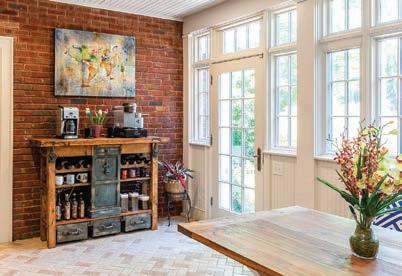



fences, patios, arches and walkways, plus copious greenery, make the house appear to rise from the earth. An extensive renovation/addition in 2005 continued the brick theme initiated during an era when, all too often, fire destroyed wooden shakes, shingles and clapboards.
Such was the fate in 1957 of Embury’s Highland Pines Inn.
A European flavor still sets this house apart from subsequent Weymouth construction, as do features like a closed vestibule with closet, an uncommon accent in warm climates. Patel and Peterman’s Realtor forwarded photos and a walk-through video to Germany.
“We bought it sight unseen,” Patel says. “We got a feeling from the pictures. We knew about the neighborhood. And we were trusting.”
Their return flight landed in D.C. With baggage and dog in tow, they drove straight to North Carolina, arriving at 1 a.m. “That’s when we saw the house for the first time. We knew our leap of faith worked out,” she says.
A renovation performed by a previous owner did not remove the architect’s intent, which, in dark-stained beams and window frames, echoes the Arts and Crafts move-



ment newly popular in America. The kitchen, of course, had to go, replaced by white and stainless steel. A brick archway opening into the new sunroom/eating area with table and banquettes may have been added when the kitchen was enlarged. Otherwise, surfaces are sleek white, black and metallic. In homage to the past, an entire wall of original kitchen cabinetry remains for storage.
Was it a sign? The previous owner left a massive refectory dining room table seating 12, almost enough for those family holidays, as well as a handsome china cabinet. The TV room contains an unusual wall-mounted floor-to-ceiling gas fireplace covered in a sandy design.
Patel appreciates both the amount of light streaming through the windows, and the tall longleaf pines that create shade.
The new owners required only one adjustment in the floor plan: An oversized master bedroom closet is now Simryn’s nursery. A bonus room over the laundry in the addition became a baby-safe play area.


Furnishings are, for the most part, comfortable and family-oriented, although the couple brought back two interesting shelf-bar units based on old wooden filing cabinets. Their piece de resistance, however, is not a Victorian desk or an original Eames lounge chair. Peterman opens the garage door, revealing a gleaming, painstakingly restored 1960 Chevy Impala, red with white leather interior, purchased when they returned stateside. This gleaming specimen of mid-century auto opulence causes quite a stir when Peterman takes it for a spin.
“There’s nothing cookie-cutter about this house,” Patel concludes. “It’s very well built, unique.”
A hundred years later, Lachine’s brick landmark has served as a comfortable interlude in this military family’s life. Soon, they will move on, having added a young family’s imprint to Weymouth’s historic past — James Boyd’s late-night literary confabs morphed into bedtime story hour; bootleg booze gave way to fruit slushies; and steamy August afternoons were soothed by the cool of air conditioning.
And so the beat goes on. PS
By a shley Walshe
September rouses you from the gentle spell of summer.
One day, between the blackberry harvest and the mighty swell of crickets, the charm took hold. Languid and blissful, you sprawled beneath the dappled shade, eyes heavy, honeysuckle on your tongue.

Rest now, summer cooed. It’s much too hot to fuss. And, just like that, you were under. Swaddled in sticky-sweetness. Wanting for nothing. Enchanted by the lazy lull of summer.
Until now.
Something has shifted. It’s a feeling, both subtle and seismic. At once, you’re wide awake.
The air is crisper, cooler, lighter. Colors are more vibrant. Even the birds have changed their tune.
Wake up, a skein of geese clamors overhead. There’s little time to waste! Their frequency is a code. An ancient language. A precious remembering. Everything will change.
The light. The trees. The pulse of the season.

Look to the maple tree, the honeybee, the frenzied gray squirrel. Life is racing toward some dark unknown. Put your ear to the warm earth and listen. This is the threshold, the quickening, the no-going-back. The final kiss of summer.
And so, you feast with all your senses. You savor the fragrance of ginger lilies, the taste of wild muscadines, the spirit of goldenrod at magic hour. You kiss summer back. A single leaf descends with a singing wind. Stay open to the beauty of this moment. Stay open to the knowing that everything will change.
Life starts all over again when it gets crisp in the fall. — F. Scott Fitzgerald
Your eyes aren’t playing tricks. When the full harvest moon rises on the evening of Tuesday, Sept. 17, it will appear larger and brighter because it is, in fact, as close to Earth as it can be. What makes this supermoon even more spectacular is the partial lunar eclipse that will reach maximum coverage around 10:44 p.m. While only a small portion of the moon’s surface will be obscured by Earth’s shadow, this partial eclipse marks the beginning of an eclipse season. An annular solar eclipse will occur on Oct. 2. Although its “ring of fire” won’t be visible from North America, don’t be surprised if you feel its powerful energetic effects.

Look! The asters are blooming. Derived from the Latin astrum, meaning star, September’s birth flower transforms the late summer landscape with jubilant constellations of white, pink, blue or purple blossoms. Often mistaken for daisies, the aster is actually related to the sunflower. (Study its bright yellow center, composed of tiny florets, and see for yourself.)
According to one Greek myth, asters sprouted from the tears of a virgin goddess named Astraea, who wished for more stars in the sky. Instead, the brilliant “stars” began spilling across the quiet earth, as they’ve done every autumn since. Magic for the eyes. Magnets for the late-season butterflies. PS

Find inspiration for your next home makeover project in the following pages. Whether you’re looking to beautify the inside of your home or add a touch of luxury to your outdoor living, this portfolio of local resources will help you enjoy the place you call home.




















• Outdoor Furniture
• Umbrellas
• Woodstock Wind Chimes
• Fire Pits
• Outdoor Decorations $50 off $300


• Plow & Hearth
• Outdoor Interiors
• Living Accents
• Four Seasons Courtyard
222A Central Park Ave.#222A Pinehurst (next to True Value Hardware)
Text Susan with inquiries @ 919-599-1615
Hours: Mon, Wed, Fri- 2-6pm | Tues, Thurs, Noon- 4pm | Saturday- 10am -4pm



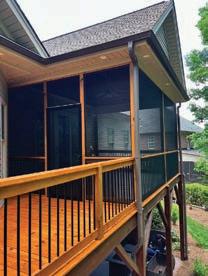



















“We couldn’t have asked for a better experience than what we received from American Wood Reface. From the salesperson to the























You’re certain to find the perfect countertop & tile for your next home project in the area’s largest stone and slab warehouse


We understand the pivotal role that exceptional planning plays in creating a truly harmonious and stylish space.






















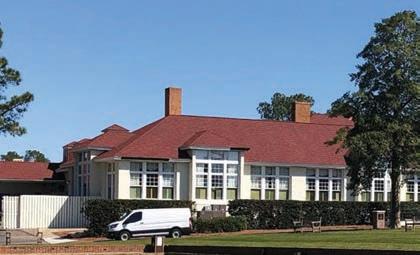

























brandoncustomclosets@gmail.com | 910-638-8012 | www.nccustomclosets.com
















• Variety of plants, shrubs, trees, annuals, and perennials
• Inside store for garden and landscape supplies
• Bulk & bagged mulch, gravel, topsoil, and mushroom compost
• Decorative river rock, flagstone, boulders, and pavers



• Hardscape and Landscape
• French Drains and Retaining Walls
• Irrigation Repairs and Landscape Lighting
• Mulch & Sod and Grading
“Trim Time absolutely had everything we were looking for — river rock, small boulders, trees, and grasses. Prompt and professional customer service and delivery. They definitely take a customer-focused approach in their business. Plan to visit them for our future landscaping needs.”



“They came(when they said they would). They saw (the vision for my yard). They conquered ( in a matter of hours, they completely transformed my front yard). Great bunch of people, trustworthy, hardworking, dependable. What more could you ask for….Call Them!! You won’t be disappointed!”








Although conscientious effort is made to provide accurate and up-to-date information, all events are subject to change and errors can occur! Please call to verify times, costs, status and location before planning or attending any events.
Sunday, September 1
VINYASA FLOW. 5:30 - 7 p.m. Adults 16 and older can come to a standup paddle board vinyasa flow class. This class continues every Sunday through September. Reservoir Park, 300 Reservoir Park Drive, Southern Pines. Info: www.hotasanastudio.com/southern-pines-nc/schedule.
Monday, September 2
QUILTS OF VALOR. 12 - 4 p.m. Quilts of Valor meets the first Monday of each month to create lap quilts made especially for veterans. If you sew, bring your machine; if you don’t sew, you can iron or cut out fabrics for new designs. This is a free program. Moore County Senior Enrichment Center, 8040 U.S. 15-501, West End.
Tuesday, September 3
BRAIN FITNESS. 10 - 11 a.m. Adults 18 and older are invited to enjoy short relaxation and brain enhancement exercises, ending with a mindfulness practice. Eve Gaskell will be the instructor. Free of charge. Douglass Community Center, 1185 W. Pennsylvania Ave., Southern Pines. Info: (910) 692-7376.
GUIDED MEDITATION. 11:15 a.m. - 12 p.m. For adults 18 and older. Meditate to step inward and re-energize. Free of charge. Douglass Community Center, 1185 W. Pennsylvania Ave., Southern Pines. Info: (910) 692-7376.
Wednesday, September 4
SANDHILLS WOMAN’S EXCHANGE. 10 a.m. The Sandhills Woman’s Exchange reopens for the fall season in the 1823 historic cabin in the village of Pinehurst. Open 10 a.m. - 3 p.m. Monday through Friday with Cabin Cafe lunches served from 11 a.m. - 2 p.m. Watch for new and unusual items in the artisan gift shop. Looking for a place to volunteer? Be a waitress, cashier, committee member or garden helper. Sandhills Woman’s Exchange, 15 Azalea Road, Pinehurst. Info: (910) 295-4677 or www.sandhillswe.org.
ACTIVE ADVENTURES. 10 - 11 a.m. Ages 2 - 5 can engage in exciting gym games and activities. Cost per session is $5 for residents and $7 for nonresidents. Southern Pines Recreational Center, 160 Memorial Park Ct., Southern Pines. Info: (910) 692-7376.
HOMESCHOOL FUN ZONE. 11:15 a.m. - 12:15 p.m. Ages 5 - 15 can join in for a day of crafts, games and new friends. Cost per session is $5 for residents and $7 for non-residents. Southern Pines Recreational Center, 160 Memorial Park Ct., Southern Pines. Info: (910) 692-7376.
Thursday, September 5
SUPPORT GROUP. 5:30 - 7:30 p.m. The Sandhills Chronic Kidney Disease Support Group meets the first Thursday of each month. Clara McLean House, Shadowlawn Room, 20 FirstVillage Drive, Pinehurst. Info: angela@sandhillsckd.com or kathy@sandhillsckd.com.
BOOK EVENT. 6 - 7 p.m. Mark R. Anderson, talks about his book Sage Among the Pines. The Country Bookshop, 140 N.W. Broad St., Southern Pines. Info: www.ticketmesandhills.com.
Friday, September 6
LUNCH BUNCH. 11:30 a.m. Adults 55 and older are invited to dine on varied cuisines each month as we visit different restaurants in the area. Carpool with friends or meet at the restaurant. Dining locations will be chosen the week before. Info: (910) 692-7376.
COMMUNITY ART DAY. 5 - 7 p.m. Help Southern Pines Parks and Recreation celebrate art day. Drop off or come create a beautiful canvas depicting what you love about Southern Pines. Canvas signs will be displayed on street signs along Broad Street in conjunction with Autumnfest. Cost is $2 per canvas. Downtown Park, 145 S.E. Broad St., Southern Pines. Info: (910) 692-7376.
COMEDY SERIES. 7 - 8 p.m. Becky Robinson, also known as the “Entitled Housewife,” performs a comedy special. Owens Auditorium, 3395 Airport Road, Pinehurst. Info: www.ticketmesandhills.com.
KARAOKE NIGHT. 7 - 10 p.m. Karaoke night is free and open to the public. Starworks Cafe & Taproom, 100 Russell Drive, Star. Info: www.StarworksNC.org.
OUTDOOR MOVIE. 7:30 p.m. It’s movie time in the Pines. Bring yourself or the entire family to watch IF. Concessions will be available for purchase. Don’t forget to bring your blanket or chair. Downtown Park, 145 S.E. Broad St., Southern Pines. Info: (910) 692-7376.
Saturday, September 7
CRAFT DAYS. Children and their families can come by the library for Drop-in Craft Days and work on crafts and coloring at their own pace. Southern Pines Public Library, 170 W. Connecticut Ave., Southern Pines. Info: (910) 692-8235 or www.sppl.net.

Downtown Southern Pines, Friday Sept. 6
KID’S SATURDAY. 10 a.m. - 12 p.m. Families are invited to a monthly themed craft event to socialize and get creative. Geared toward ages 310. Given Memorial Library, 150 Cherokee Road, Pinehurst. Info: (910) 295-3642 or www.vopnc.org.
BEE PRESENTATION. 10:30 a.m. Join Dennis Brown and Liz Whitaker from the Moore County Beekeepers Association for a fun and informative presentation that will leave you buzzing. Learn more about what it takes to start keeping bees, the ins and outs of hive maintenance and more. Southern Pines Public Library, 170 W. Connecticut Ave., Southern Pines. Info: www.sppl.net.
SOUND BATH. 5:30 - 7 p.m. Adults 16 and older can come to a standup paddle board sound bath flow. Reservoir Park, 300 Reservoir Park Drive, Southern Pines. Info: www.hotasanastudio.com/ southern-pines-nc/schedule.
LIVE MUSIC. 7 - 9 p.m. Rod Brady performs live. Starworks Cafe & Taproom, 100 Russell Drive, Star. Info: www.StarworksNC.org.
Sunday, September 8
STEAM. 2:30 - 3:30 p.m. Elementary-aged children and their caregivers are invited to learn about topics in science, technology, engineering, art, and math and to participate in STEAM projects and activities. This month we have NASA Solar System Ambassador, Jon Caruthers joining us to talk about Robots in Space! Southern Pines Public Library, 170 W. Connecticut Ave., Southern Pines. Info: (910) 692-8235 or kbroughey@sppl.net.
Monday, September 9
TOWN HALL. 6:30 - 8 p.m. The Moore County League of Women Voters will be presenting N.C. Trusted Elections Tour — Nonpartisan Town Hall. Admission is free, registration is requested. Sunrise Theater, 250 N.W. Broad St., Southern Pines. Info: www.lwvmc.org.
PHOTO CLUB. 7 p.m. Sandhills Photography Club monthly meeting presents “Minimalist Photography,” with Judy Hancock Holland. Discover the art of simplifying your photographic frame to its purest form. Holland, an award-winning photographer, will guide you in capturing the essence of your subjects with clarity and impact. Guests welcome. Sandhills Horticultural Gardens, 3245 Airport Road, Southern Pines. Info: www. sandhillsphotoclub.org.
Tuesday, September 10
TACO CRUISE. 8 a.m. - 5 p.m. Adults 55 and older are invited to join us for an all-you-can-eat, build-your-own-tacos aboard the Virginia Dare. Enjoy sightseeing and lunch on beautiful Smith Mountain Lake. Cost is $59 for residents and $82 for non-residents. Info: (910) 692-7376.
HATHA YOGA. 10 - 11 a.m. Adults 55 and older can increase flexibility, balance, stability and muscle tone while learning the basic principles of alignment and breathing. You may gain strength, improve circulation and reduce chronic pain as

we practice gentle yoga postures and mindfulness. Free of charge. Douglass Community Center, 1185 W. Pennsylvania Ave., Southern Pines. Info: (910) 692-7376.
AARP TALK. 12 - 12:30 p.m. Adults 55 and older are invited to join AARP for a fraud talk. Free of charge. Douglass Community Center, 1185 W. Pennsylvania Ave., Southern Pines. Info: (910) 692-7376.
TEEN CREATIVITY CLUB. 4:30 p.m. Teen Creativity Club is our meeting space for creative teens ages 13 and older. From creative writing to storytelling to drawing and more; come by and see what other teen artists are doing. This is mostly an open space with some librarian-led activities. Southern Pines Public Library, 170 W. Connecticut Ave., Southern Pines. Info: kbroughey@sppl.net.
TRIBUTE CONCERT. 7 - 8:30 p.m. ARRIVAL from Sweden performs an ABBA tribute show. Owens Auditorium, 3395 Airport Road, Pinehurst. Info: www.ticketmesandhills.com.
Thursday, September 12
HOT GLASS, COLD BEER. 5:30 p.m. Glassblowing demonstration and live music from Colin Cutler. Cost is $5. Starworks Cafe & Taproom, 100 Russell Drive, Star. Info: www. StarworksNC.org.
Friday, September 13
LIVE AFTER 5. 5:15 - 9 p.m. Dance the night away with the band BOUNCE! at Live After 5. Paige King Johnson is the opening act. There will also be kids’ activities, food trucks, as well as beer, wine and additional beverages. The Village Arboretum, 375 Magnolia Road, Pinehurst. Info: www.vopnc.org.
Saturday, September 14
COMMUNITY YARD SALE. 9 a.m. - 2 p.m. Enjoy shopping 20 - 40 individual outdoor booths offering everything from handmade crafts, modern tools and electronics, vintage and antique collectibles, and even an assortment of everyday household items or clothes. A food truck will be on-site. The Bee’s Knees, 125 N.C. 73, West End. Info: (910) 420-8970.
WORKSHOP. 9 a.m. - 3 p.m. Join us for a continuing welding and metal fabrication workshop. Cost is $250. Starworks Metal Studio, 100 Russell Drive, Star. Info: www.StarworksNC.org.
Sunday, September 15
YOGA. 8 - 9:30 a.m. Adults 16 and older can come practice standup paddle board holds and have a 15-minute meditation session. Reservoir Park, 300 Reservoir Park Drive, Southern Pines. Info: www.hotasanastudio.com/ southern-pines-nc/schedule.




WRITING GROUP. 3 p.m. Are you interested in creating fiction, nonfiction, poetry or comics? Come to the Sunday Afternoon Writing Group. Connect with other writers and artists, chat about your craft, and get feedback about your work. All levels welcome. Southern Pines Public Library, 170 W. Connecticut Ave., Southern Pines. Info: lholden@sppl.net.
JAZZ MUSIC. 7 - 9 p.m. Enjoy a night of jazz from Peter Lamb and the Wolves. Fair Barn, 200 Beulah Hill Road S., Pinehurst. Info and tickets: www.ticketmesandhills.com.
Tuesday, September 17
BRAIN FITNESS. 10 - 11 a.m. Adults 18 and older are invited to enjoy short relaxation and brain enhancement exercises, ending with a mindfulness practice. Eve Gaskell will be the instructor. Free of charge. Douglass Community Center, 1185 W. Pennsylvania Ave., Southern Pines. Info: (910) 692-7376.
BINGO. 11 a.m. - 12 p.m. Adults 55 and older are invited to play 10 games of bingo. Cost is $4 for residents and $6 for non-residents. Douglass Community Center, 1185 W. Pennsylvania Ave., Southern Pines. Info: (910) 692-7376.
TWEEN BOOK TASTING. 3:30 p.m. Explore different genres and new library books at our “tasting tables.” Learn how to assess if a book is a good fit for you. Dive into new literary adventures. For
ages 9 - 12. Space is limited. Southern Pines Public Library, 170 W. Connecticut Ave., Southern Pines. Info: kbroughey@sppl.net.
Wednesday, September 18
ACTIVE ADVENTURES. 10 - 11 a.m. Ages 2 - 5 can engage in exciting gym games and activities. Cost per session is $5 for residents and $7 for nonresidents. Southern Pines Recreational Center, 160 Memorial Park Ct., Southern Pines. Info: (910) 692-7376.
HOMESCHOOL FUN ZONE. 11:15 a.m. - 12:15 p.m. Ages 5 - 15 can join in for a day of crafts, games and new friends. Cost per session is $5 for residents and $7 for non-residents. Southern Pines Recreational Center, 160 Memorial Park Ct., Southern Pines. Info: (910) 692-7376.
WHITEHALL BOOK CLUB. 2 p.m. Southern Pines Public Library’s book club for adults meets to discuss this month’s book. The book club is open to the public. Whitehall Property, 490 Pee Dee Road, Southern Pines. Info: mmiller@sppl.net.
Thursday, September 19
BRUNCH. 9:30 - 11:30 a.m. Join us for a relaxing and uplifting morning with a brunch meal, musical selections, a fashion show by Looking For Linda boutique and inspirational speakers. Sponsored by Sandhills Christian Women’s Connection. Country Club of Whispering Pines, 2 Clubhouse Blvd., Whispering Pines. Cost is $24.

Reservations: (910) 215-4568 or e-mail patsyrpeele@gmail.com.
READ BETWEEN THE PINES. 5 p.m. Do you love reading and discussing amazing books? If so, join SPPL’s evening book club for adults, Read Between the Pines. Copies of the book are available at the library to check out while supplies last. Southern Pines Public Library, 170 W. Connecticut Ave., Southern Pines. Info: mhoward@sppl.net.
OPEN MIC NIGHT. 7 - 9 p.m. Open mic night is free and open to the public. Starworks Cafe & Taproom, 100 Russell Drive, Star. Info: www. StarworksNC.org.
Saturday, September 21
CRAFT DAYS. Children and their families can come by the library for Drop-in Craft Days and work on crafts and coloring at their own pace. Southern Pines Public Library, 170 W. Connecticut Ave., Southern Pines. Info: (910) 6928235 or www.sppl.net.
WOOFSTOCK. 10 a.m. - 2 p.m. Enjoy music, dog contests and events, food trucks and vendors offering services for dogs and people alike. Admission by any monetary donation. All proceeds will be for upgrading Martin Park for all our furry friends. Memorial Park, 210 Memorial Park Ct., Southern Pines. Info: (910) 692-7376.
EATS, BEATS AND BREWS. 5 - 9 p.m. Eats,







Beats and Brews returns offering a variety of your favorite local vendors while bringing something new into town. Wine and craft beer will be available for purchase, outside alcoholic beverages are not permitted. Live entertainment throughout the evening for all to enjoy, and fun activities in store for kids. The Village Arboretum, 375 Magnolia Road, Pinehurst. Info: www.vopnc.org.
DANCING. 6 p.m. Carolina Pines Dance Club invites you for a fun evening of swing, shag, ballroom, Latin and line dancing. Doors open at 6 p.m. Dance lessons from 6:30 - 7:30 p.m. Dancing until 9:30 p.m. Beginners and experienced dancers, couples and singles all welcome. Cost is $20 per person, cash at the door. Tyson Sinclair Ballroom, 105 McReynolds St. (second floor), Carthage. Info: (910) 331-9965.
TRIVIA NIGHT. 7 - 9 p.m. Trivia night is free and open to the public. Starworks Cafe & Taproom, 100 Russell Drive, Star. Info: www. StarworksNC.org.
CONCERT. 7:30 p.m. Singer Amy Grant performs. Givens Performing Arts Center at UNC Pembroke, 1 University Drive, Pembroke. Info: www.uncp.edu/gpac.
Sunday, September 22
BOOK EVENT. 2 - 3 p.m. Nancy Yow Holt talks about her book I Hope You Will All Remember Me: The Civil War Letters of Matthew C. Yow. The
Country Bookshop, 140 N.W. Broad St., Southern Pines. Info: www.ticketmesandhills.com.
Tuesday, September 24
HATHA YOGA. 10 - 11 a.m. Adults 55 and older can increase flexibility, balance, stability and muscle tone while learning the basic principles of alignment and breathing. You may gain strength, improve circulation and reduce chronic pain as we practice gentle yoga postures and mindfulness. Free of charge. Douglass Community Center, 1185 W. Pennsylvania Ave., Southern Pines. Info: (910) 692-7376.
TEEN CREATIVITY CLUB. 4:30 p.m. Teen Creativity Club is our meeting space for creative teens ages 13 and older. From creative writing to storytelling to drawing and more, come by and see what other teen artists are doing. This is mostly an open space with some librarian-led activities. Southern Pines Public Library, 170 W. Connecticut Ave., Southern Pines. Info: kbroughey@sppl.net.
BOOK EVENT. 6 - 7 p.m. Join us at the Carriage House at the Weymouth Center for a special event for the launch of Leigh Ann Henion’s new book, Night Magic: Adventures Among Glowworms, Moon Gardens, and other Marvels of the Dark. Weymouth Center, 555 E. Connecticut Ave., Southern Pines. Info: www.ticketmesandhills.com.



Wednesday, September 25
BOOK CHAT AND CHILL. 5:30 - 6:30 p.m. Join us for a fabulous evening of book discussions and camaraderie. diVine Lounge, 390 S.W. Broad St., Unit A-1, Southern Pines. Info: mhoward@sppl.net.
JAZZ NIGHT. 6:30 - 8:30 p.m. Jazz night featuring Soul Noises. Starworks Cafe & Taproom, 100 Russell Drive, Star. Info: www.StarworksNC.org.
DANCE PRODUCTION. Enjoy Mathew Bourne’s dance version of Edward Scissorhands. Cameo Art House Theatre, 225 Hay St., Fayetteville. Info: www.ticketmesandhills.com.
Thursday, September 26
WELLNESS CLASSES. 10 - 11:30 a.m. For adults 18 and older. Join us for educational topics providing information to improve your overall mind, body and spirit. Free of charge. Douglass Community Center, 1185 W. Pennsylvania Ave., Southern Pines. Info: (910) 692-7376.
DOUGLASS CENTER BOOK CLUB. 10:30 a.m. Multiple copies of the selected book are available for checkout at the library. The Douglass Center, 1185 W. Pennsylvania Ave., Southern Pines. Info: mmiller@sppl.net.
MEDICAL MINUTES. 1 - 2 p.m. Adults 55 and older are invited to learn about different topics beneficial to our senior community. Free of charge. Douglass Community Center, 1185 W. Pennsylvania Ave., Southern Pines. Info: (910) 692-7376.





OLD TIME JAM. 7 - 9 p.m. Bring your string instrument and join the jam. Starworks Cafe & Taproom, 100 Russell Drive, Star. Info: www. StarworksNC.org.
Friday, September 27
HOMESCHOOL HANGOUT. 2:30 - 4:30 p.m. Homeschool Hangout is a monthly drop-in space for homeschooling families in grades K-12. Meet up with others and work on activities based on this month’s theme of: Mini Beasts — Studying Small Creatures. We will have some activities and resources available based on the theme, but feel free to bring your own. Southern Pines Public Library, 170 W. Connecticut Ave., Southern Pines. Info: www.sppl.net.
FOURTH FRIDAY. 6 p.m. On the fourth Friday of every month, The District features the best of Fayetteville visual and performing arts, live music, and street performers. All ages get a taste of downtown Fayetteville’s dynamic arts and entertainment district while supporting local independent galleries, bistros and shops full of unique goods and gifts. Downtown, 222 Hay St., Fayetteville. Info: (910) 223-1089.
Saturday, September 28
STORYTIME. 10:15 a.m. Saturday Storytime is our once-a-month program for children from birth to age 5. Join us for stories, songs, rhymes and smiles where caregivers and young children
can interact and explore the fun of language and early literacy. There are space constraints for this indoor story time. Southern Pines Public Library, 170 W. Connecticut Ave., Southern Pines. Info: www.sppl.net.
FLUTTERBY FESTIVAL. 11 a.m. - 2 p.m. Enjoy live music, fun activities and food while learning about monarch butterflies, insects and birds. The Village Arboretum, 375 Magnolia Road, Pinehurst. Info: www.vopnc.org or www.ticketmesandhills.com.
Sunday, September 29
YOGA. 8 - 9:30 a.m. Adults 16 and older can come practice standup paddle board holds and have a 15-minute meditation session. Reservoir Park, 300 Reservoir Park Drive, Southern Pines. Info: www.hotasanastudio.com/ southern-pines-nc/schedule.
Monday, September 30
BOOK EVENT. 6:30 - 7:30 p.m. The Country Bookshop welcomes Nicholas Sparks chatting with Kimberly Daniel Taws about his latest book, Counting Miracles. Lee Auditorium, 250 Voit Gilmore Lane, Southern Pines. Info: www.ticketmesandhills.com.
UPCOMING EVENTS
Thursday, October 3
TAG SALE AND RAFFLE. 2 - 5 p.m. Shop the

White Elephant Tag Sale and Raff le for gently used furniture, art, household items, jewelry, toys, sports equipment, home baked goods and more. There will also be raff le prizes and a silent auction. Sneak Peek Tag Sale is Oct. 3 from 2 - 5 p.m. The tag sale will be October 4 from 11 a.m. - 5 p.m. and Oct. 5 from 8 - 11 a.m. Raff le ticket purchase needed for admission to the Sneak Peek Sale. No entry fee Friday or Saturday. Proceeds benefit Sacred Heart Church Ministries and Moore County charitable organizations. Founders Hall, next to Sacred Heart Church, N.C. 211 and Dundee Road, Pinehurst. Info (910) 295-0704.
Saturday, October 5
AUTUMNFEST. 9 a.m. - 4 p.m. Come to a day full of arts and crafts, live entertainment, great food, kids’ rides, a Fun Run/Walk, a 5K road race and much more. Downtown Park, 145 S.E. Broad St., Southern Pines. Info: www.southernpines.net.
PUMPKIN PATCH TRAIL. 10 a.m. - 5 p.m. The Potters’ Pumpkin Patch Trail is a self-guided tour of five pottery galleries each offering unique fallthemed ceramic items throughout October with special event activities on each Saturday of the month. Tour starts at 247 W. Main St., Seagrove. Info: www.potterspumpkinpatch.com.
MET OPERA. 1 p.m. Met Opera opens its 18th season with Offenbach’s Les Contes d’Hoffman. Sunrise Theater, 250 N.W. Broad St., Southern Pines. Info: (910) 692-3611 or www.sunrisetheater.com.








Mondays
WORKSPACES. 7 a.m. - 3 p.m. The Given Tufts Bookshop has a pop-in co-workspace open on Mondays and Thursdays in the upstairs conference room. Bookshop floor and private meeting room by reservation only. Info: www.giventuftsfoundation.com.
WORKOUTS. 8:30 a.m. - 4:30 p.m. Adults 55 and older are invited to get their workout on. Open Monday through Friday. Cost for six months: $15/ resident; $30/non-resident. Douglass Community Center, 1185 W. Pennsylvania Ave., Southern Pines. Info: (910) 692-7376.
CHAIR YOGA. 9 - 10 a.m. For adults 55 and older. Help off set body aches encountered with desk work. This is an accessible yoga class for bodies not able to easily get up from and down to the floor. Do standing or sitting in a chair. Douglass Community Center, 1185 W. Pennsylvania Ave., Southern Pines. Info: (910) 692-7376.
STRENGTH AND BALANCE WORKOUT. 11 - 11:45 a.m. Adults 55 and older are invited to enjoy a brisk workout that focuses on balance and strength. Free of charge. Douglass Community Center, 1185 W. Pennsylvania Ave., Southern Pines. Info: (910) 692-7376.
RESTORATIVE YOGA. 12 p.m. For adults 55 and older. Practice gentle movements that

may help alleviate pain, improve circulation and well-being. Bring your own mat. Free of charge. Douglass Community Center, 1185 W. Pennsylvania Ave., Southern Pines. Info: (910) 692-7376.
GAME ON. 1 p.m. For adults 55 and older. You and your friends are invited to play various games such as corn hole, badminton, table tennis, shuff leboard, trivia games and more. Each week enjoy a different activity to keep you moving and thinking. Compete with friends and make new ones all for free. Douglass Community Center, 1185 W. Pennsylvania Ave., Southern Pines. Info: (910) 692-7376.
TAI CHI. 1 - 2 p.m. Adults 55 and older are invited to learn tai chi for arthritis and fall prevention. Free of charge. Classes go through October 16. Douglass Community Center, 1185 W. Pennsylvania Ave., Southern Pines. Info: (910) 692-7376.
BRIDGE. 1:30 - 4:30 p.m. For adults 55 and older. Enjoy games of bridge with friends. Douglass Community Center, 1185 W. Pennsylvania Ave., Southern Pines. Info: (910) 692-7376.
PLAYFUL LEARNING. 10 a.m. - 2 p.m. Come for a drop-in, open playtime for ages 0 - 3 years to interact with other children and have educational playtime. Given Memorial Library, 150 Cherokee


Road, Pinehurst. Info: (910) 295-3642.
BABY RHYMES. 10:15 a.m. Baby Rhymes is specially designed for the youngest learners (birth2) and their caregivers. Repetition and comforting movements make this story time perfect for early development and brain growth. There will be a duplicate session at 10:45 a.m. An active library card is required. Dates this month are Sept. 10, 17 and 24. Southern Pines Public Library, 170 W. Connecticut Ave., Southern Pines. Info: (910) 6928235 or www.sppl.net.
GAME DAY. 12 p.m. Enjoy bid whist and other cool games all in the company of great friends. For adults 55 and older. Douglass Community Center, 1185 W. Pennsylvania Ave., Southern Pines. Info: (910) 692-7376.
CHESS. 1:30 - 5 p.m. Come join a chess group, whether you have been playing for a while or you have never played. This is a free program. Moore County Senior Enrichment Center, 8040 U.S. 15-501, West End.
LINE DANCE. 4:45 p.m. Put on your dancing shoes and line dance. This is for beginners and is a free program. Moore County Senior Enrichment Center, 8040 U.S. 15-501, West End.
Wednesdays
CHAIR YOGA. 10 - 11 a.m. For adults 55 and older. Help off set body aches encountered with desk work. This is an accessible yoga class for bodies not able to easily get up from and down to the floor. Do standing or sitting in a chair. Douglass Community Center, 1185 W. Pennsylvania Ave., Southern Pines. Info: (910) 692-7376.
BRAIN BOOST. 10 - 11 a.m. Test your memory while creating new brain connections. This is a free program. Moore County Senior Enrichment Center, 8040 U.S. 15-501, West End.
KNITTING. 10 - 11 a.m. Learn how to knit or just come enjoy knitting with other people. This is a free program. Moore County Senior Enrichment Center, 8040 U.S. 15-501, West End.
BABY STORY TIME. 10 - 11 a.m. Come have fun developing the foundation for your baby’s later reading with stories, songs and play. Open to parents and caregivers of infants from newborn to 24 months. Moore County Library, 101 W. Saunders St., Carthage. Info: (910) 947-5335.
LEARN AND PLAY. 10 a.m. - 12 p.m. Come in for an open play date with your toddler or preschooler where there will be developmental toys and puzzles as well as early literacy tips on display for parents and caregivers to incorporate into their daily activities. Dates this month are Sept. 4, 11, 18 and 25. Southern Pines Public Library, 170 W. Connecticut Ave., Southern Pines. Info: (910) 6928235 or www.sppl.net.
JEWELRY MAKING. 10:30 - 11:30 a.m. Adults 55 and older are invited to come with friends and create fun designs and memories. Supplies are provided. Douglass Community Center, 1185 W. Pennsylvania Ave., Southern Pines. Info: (910) 692-7376.


To the end that all shall grow in harmony, Thus do we covenant with one another. All

9-6

Becky Robinson
Comedian Becky Robinson, “The Entitled Housewife,” brings her explosive comedy! September 6th - Bradshaw Performing Arts Center
The Music of ABBA
“ARRIVAL from Sweden” brings the world’s greatest ABBA tribute show to Sandhills. September 10th - Bradshaw Performing Arts Center
Peter Lamb & the Wolves
Step
The
The Unitarian Universalist Congregation of the Sandhills, where open minds and open hearts come together in a spirit of love and respect. Come be a part of a community that encourages personal growth, social justice, and compassion . Join us at 1320 Rays Bridge Road, Whispering Pines every Sunday at 10 AM

Embrace diversity, foster connection, and journey with us toward a more compassionate world. All l a re e w ellcom m e – come as you are, and let's grow together!"
IMPROV ACTING CLASS. 11 a.m. - 12 p.m. For adults 55 and older. Are you ready to laugh and have fun? Then sign up for our free improvisational acting class. Free of charge. Douglass Community Center, 1185 W. Pennsylvania Ave., Southern Pines. Info: (910) 692-7376.
PIANO. 11 a.m. - 12 p.m. Join Flint Long to either play piano or just listen. This is a free program. Moore County Senior Enrichment Center, 8040 U.S. 15-501, West End.
LINE DANCING. 12 - 1 p.m. Looking for new ways to get your daily exercise in and care for yourself? Try line dancing. For adults 55 and older. Douglass Community Center, 1185 W. Pennsylvania Ave., Southern Pines. Info: (910) 692-7376.
CHAIR VOLLEYBALL. 1 - 2 p.m. For adults 55 and older. Get fit while having fun. Free to participate. Douglass Community Center, 1185 W. Pennsylvania Ave., Southern Pines. Info: (910) 692-7376.
BRIDGE. 1:30 - 4:30 p.m. For adults 55 and older. Enjoy games of bridge with friends. All materials included. Douglass Community Center, 1185 W. Pennsylvania Ave., Southern Pines. Info: (910) 692-7376.
DANCE. 2 - 2:30 p.m. For adults 55 and older. Instructor Maria Amaya will introduce you to dance fitness in this class designed for anyone
who wants to gently and gradually increase their cardio function, mobility and balance and have fun at the same time. Free of charge. Douglass Community Center, 1185 W. Pennsylvania Ave., Southern Pines. Info: (910) 692-7376.
LINE DANCING. 2 p.m. The town of Vass will host line dancing for seniors every other Wednesday. Cost is $5 per session. Vass Town Hall, 140 S. Alma St., Vass. Info: www. townofvassnc.gov.
TAI CHI. 2 - 3 p.m. Adults 55 and older are invited to learn tai chi for arthritis and fall prevention. Free of charge. Classes go through October 16. Douglass Community Center, 1185 W. Pennsylvania Ave., Southern Pines. Info: (910) 692-7376.
IMPROVISATIONAL ACTING. 3 - 4 p.m. For adults 55 and older. Acting is a dynamic and engaging art form and exploring it through a variety of roles can be incredibly enriching. Unleash your creativity, embrace the unexpected, and share some laughter together. Free of charge. Douglass Community Center, 1185 W. Pennsylvania Ave., Southern Pines. Info: (910) 692-7376.
SANDHILLS FARMERS MARKET. 3 - 6 p.m.
The Sandhills Farmers Market features some of the many wonderful farms, nurseries, bakeries, meat and egg providers, cheesemakers and specialty food producers our area has to offer. You
will find this incredible mix of vendors twice a week at Tufts Memorial Park through October 5. Tufts Memorial Park, 1 Village Green Road W., Pinehurst. Info: www.vopnc.org.
LIBRARY PROGRAM. 3:30 p.m. At The Library After School (ATLAS) is an after-school program for kindergartners through second graders who enjoy activities, crafts, stories and meeting new friends. Dates this month are Sept. 11, 18 and 25. Southern Pines Public Library, 170 W. Connecticut Ave., Southern Pines. Info: (910) 6928235 or www.sppl.net.
TAI CHI. 6:30 p.m. Come learn tai chi. There is no age limit and the classes are open to the public. Cost is $10 per class. Seven Lakes West Community Center, 556 Longleaf Drive, Seven Lakes. Info: (910) 400-5646.
WORKSPACES. 7 a.m. - 3p.m. The Given Tufts Bookshop has a pop-in co-workspace open on Mondays and Thursdays in the upstairs conference room. Bookshop floor and private meeting room by reservation only. Info: www.giventuftsfoundation.com.
MOORE COUNTY FARMERS MARKET. 9 a.m. - 1 p.m. The year-round market features “producer only” vendors within a 50-mile radius providing fresh, local and seasonal produce, fruits, pasture meats, eggs, potting plants, cut flowers and local






honey. Crafts, baked goods, jams and jellies are also available. Market is located at the Armory Sports Complex, 604 W. Morganton Road, Southern Pines.
GIVEN STORY TIME. 10 a.m. Bring your preschooler to enjoy stories, songs and activities. Given Memorial Library, 150 Cherokee Road, Pinehurst. Info: (910) 295-3642.
BALANCE AND FLEXIBILITY. 10 - 11 a.m.
Adults 55 and older are invited to enjoy a class that will help reduce the risk of taking a tumble while increasing their ability to recover if they do. Free of charge. Douglass Community Center, 1185 W. Pennsylvania Ave., Southern Pines. Info: (910) 692-7376.
MUSIC AND MOTION. 10:15 and 10:45 a.m. Does your toddler like to move and groove? Join us for Music and Motion to get those wiggles out and work on gross and fine motor skills. For ages 2 - 5. An active library card is required. Dates this month are Sept. 12, 19 and 26. Southern Pines Public Library, 170 W. Connecticut Ave., Southern Pines. Info: (910) 692-8235 or www.sppl.net.
CROCHET CLUB. 11 a.m. - 12 p.m. Adults 55 and older are invited to come with friends to create fun designs and memories. Supplies are on site. Free of charge. Douglass Community Center, 1185 W. Pennsylvania Ave., Southern Pines. Info: (910) 692-7376.
STRETCH, STRENGTH, BALANCE. 11 a.m.
- 12 p.m. Adults 55 and older can enjoy exercises that will improve your overall quality of life. Exercises can be performed standing or seated. Free of charge. Douglass Community Center, 1185 W. Pennsylvania Ave., Southern Pines. Info: (910) 692-7376.
ADAPTIVE YOGA. 12 - 1 p.m. Adults 55 and older can enjoy yoga that meets them where they are. We’ll be creating a sense of balance and ease by slowly increasing your range of motion and mobility while maintaining natural abilities. Free of charge. Douglass Community Center, 1185 W. Pennsylvania Ave., Southern Pines. Info: (910) 692-7376.
CHESS AND MAHJONG. 1 p.m. For adults 55 and older. Bring a board and a friend. Douglass Community Center, 1185 W. Pennsylvania Ave., Southern Pines. Info: (910) 692-7376.
CABIN TOURS. 1 - 4 p.m. The Moore County Historical Association’s Shaw House grounds, cabins and gift shop are open for tours and visits. The restored tobacco barn features the history of children’s roles in the industry. Docents are ready to host you and the cabins are open Thursdays, Fridays and Saturdays. Shaw House, 110 W. Morganton Road, Southern Pines. Info: (910) 6922051 or www.moorehistory.com.
IMPROVERS LINE DANCE. 3 - 5:30 p.m. Put on your dancing shoes and line dance. This is a

free program. Moore County Senior Enrichment Center, 8040 U.S. 15-501, West End.
LITTLE U. 3:30 p.m. Introducing Little U, Southern Pines Public Library’s new preschool program for children ages 3 1/2 - 5. Join us for stories, songs, rhymes, and activities that explore the world of books, language, and literacy. Little U is a fun and interactive program designed to help preschoolers develop early literacy skills in preparation for kindergarten and beyond. Dates this month are Sept. 12, 19 and 26. Southern Pines Public Library, 170 W. Connecticut Ave., Southern Pines. Info: (910) 692-8235 or www.sppl.net.
SOUND BATH. 6:30 - 7:30 p.m. All ages can enjoy the rhythm and vibration of this medicine drum sound bath moving the body and mind into deep rest mode. Your body will be refreshed and your mind clear and quiet. A unique and ancient healing arts practice. Cost is $4 for residents and $6 for non-residents. Train House, 482 E. Connecticut Ave., Southern Pines. Info: (910) 692-7376.
TRIVIA NIGHT. 7 - 9 p.m. Come enjoy a beer and some trivia. Hatchet Brewing Company, 490 S.W. Broad St., Southern Pines. Info: www. hatchetbrewing.com.
AEROBIC DANCE. 9 - 10 a.m. For adults 55 and older. Enjoy this low-to-moderate impact class with




























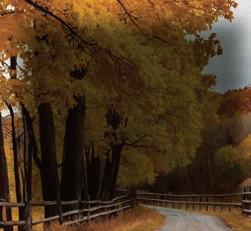






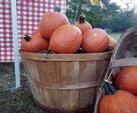

energizing music for an overall cardio and strength workout. Free of charge. Douglass Community Center, 1185 W. Pennsylvania Ave., Southern Pines. Info: (910) 692-7376.
JAM SESSION. 9:30 - 11:30 a.m. Do you like to play an instrument, sing or just listen to music? Come join a music jam session. This is a free program. Moore County Senior Enrichment Center, 8040 U.S. 15-501, West End.
TAP CLASS. 10 - 11:30 a.m. For adults 55 and older. All levels welcome. Cost per class: $15/ resident; $30/non-resident. Douglass Community Center, 1185 W. Pennsylvania Ave., Southern Pines. Info: (910) 692-7376.
QIGONG. 1 p.m. For adults 55 and older. Classes will consist of chair and standing movements that can help soothe achy feet, tight hips, low back pain and ease restriction in mobility. Free of charge. Douglass Community Center, 1185 W. Pennsylvania Ave., Southern Pines. Info: (910) 692-7376.
BRIDGE. 1:30 - 4:30 p.m. For adults 55 and older. Enjoy games of bridge with friends. All materials included. Douglass Community Center, 1185 W. Pennsylvania Ave., Southern Pines. Info: (910) 692-7376.
LINE DANCING. 3 - 4 p.m. For adults 55 and older. If you’re interested in learning dance moves

and building confidence on the dance floor, this class is for you. Leave your inhibitions at the door and join in. Cost is: $36 for residents and $52 for non-residents per month. Cost is for a monthly membership. Douglass Community Center, 1185 W. Pennsylvania Ave., Southern Pines. Info: (910) 692-7376.
MOORE COUNTY FARMERS MARKET. 8 a.m. - 12 p.m. The market features “producer only” vendors within a 50-mile radius providing fresh, local and seasonal produce, fruits, pasture meats, eggs, potting plants, cut flowers and local honey. Crafts, baked goods, jams and jellies are also available. The market runs through November except Autumnfest Oct. 5. Downtown Southern Pines, 156 S.E. Broad St., Southern Pines.
SANDHILLS FARMERS MARKET. 10 a.m. - 1 p.m. The Sandhills Farmers Market features some of the many wonderful farms, nurseries, bakeries, meat and egg providers, cheesemakers and specialty food producers our area has to offer. You will find this incredible mix of vendors twice a week at Tufts Memorial Park through October 5. Tufts Memorial Park, 1 Village Green Road W., Pinehurst. Info: www.vopnc.org. PS












6-8pm

Art Opening and Exhibit featuring works by Jenay Jarvis – and –Pat McBride
Sep. 6 - 26, 2024
M-F 10am-5pm
Auditions: Mon., October 7, 2024 at 3:45-5:45pm. Location: Moore Montessori School Auditorium (395 E Massachusetts Ave, Southern Pines)
Notes on Auditions:
All students in grades K-8 are invited to audition. Those auditioning need to arrive at 3:45pm and plan to stay for the full two hours. Some cast members will be asked to stay for a rehearsal immediately following the auditions and a rehearsal schedule for the week will be available immediately after auditions.
Rehearsals: Monday-Friday from 3:45-8:00pm.
Performances: Fri. October 11, 2024 • 7pm & Sat. October 12, 2024 • 11am








Weymouth
Wednesday,
Photographs by Diane McKay




























Walthour-Moss Foundation
Fun Dog Benefit Show
Saturday, June 8, 2024
Photographs by Diane McKay




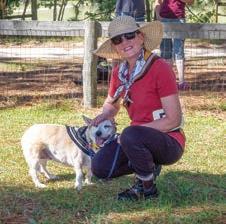


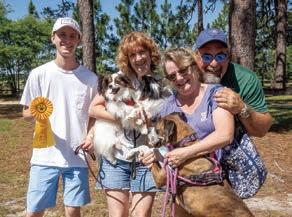








Joseph






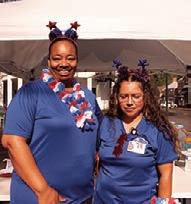
Fourth of July Parade
Village of Pinehurst
Thursday, July 4, 2024
Photographs by Jeanne Paine




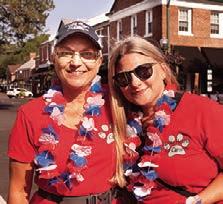

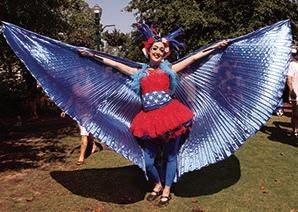






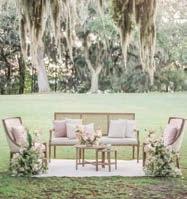
























































































1. Honoree’s spot
5. It’s finally that cool time of
9. Gossip
13. Group of eight
15. Stare
16. Shoestring
17. When we all get together to
18. Bagpiper’s wear
19. Opposed to 20. Domains
22. Decree
24. Wicked
25. But your rivals are ____
26. Certain Arabs
29. Protuberance
30. Special ____, military
31. Eagle’s nest
33. Mistake
37. Hunter’s quarry
39. ___-Japanese War
41. Wise
42. Wall hangings
44. Tiny bits
46. Bog
47. First man to orbit Earth
49. Group of seven
51. Your team is ____
54. Dock
55. South or North ____
56. Analyze
59. Female
60. Churn
62. Happening, to Sherlock Holmes
64. And others, for short
65. “___ bitten, twice shy”
66. “All I ___ Do” (Sheryl Crow song)
67. Back talk
68. Bassoon, e.g.
69. And you’re out of the nachos and____
1. Elmer, to Bugs
2. Advil target
3. Any one thing
4. Oozed
5. Bumpkin
6. Auspices
7. “Is that ___?”
8. Get new machinery
9. Urinary sacs
10. Veranda
11. Be part of the cast in film (2 wds)
12. Existence
14. “Who Wants to Be a Millionaire?” staple
21. Stage item
23. Anger
25. Kind of room
26. Fizzy drink
27. Mimic
28. ___-friendly


29. Range animal
32. Regretting
34. Flat floater
35. Arch type
36. Cost of living?
38. Raggedy Ann and Andy (2 wds)
40. Desert sight
43. Buttonhole, e.g.
45. Go up and down
48. Bewitch
50. Home constructed off-site, for short
Fill in the grid so every row, every column and every 3x3 box contain the numbers 1-9.
Puzzle answers on page 133
Mart Dickerson lives in Southern Pines and welcomes suggestions from her fellow puzzle masters. She can be reached at martaroonie@gmail.com.
51. Barely beats
52. Indian condiment
53. Gumbo vegetables
54. Stacked
56. Game cubes
57. Road hazard marker
58. Strengthen, with “up,” at the gym
61. “____in a million”
63. UNC ____Heels
Even if you’re in the slow lane
BY JENNA BITER
I

point out the windshield as it closes in fast and whirs past.
“Cement trucks are pretty cool,” I say to my husband, who’s in the passenger seat. The vehicle technically mixes and delivers concrete, but “concrete truck” just doesn’t sing.
“They are,” Drew replies with a grin. Five years into marriage, he’s accustomed to my childlike musings. He may even enjoy them, or pretend to, particularly on road trips that beg the universally hated question: How much longer?
I watch the fat barrel spin round and round as it recedes into the rearview mirror.
“Isn’t it amazing, though?” My eyebrows lift. “If I collected all the necessary ingredients — the sugar, the cream, the milk, some chocolate for sure, whatever — and throw them into the belly of a cement truck, do you think it would make ice cream?”
My eyebrows hit their ceiling. Drew, being the problem-solver he is, inverts my expression.
“What if they’re already doing it?” I blurt out before he can work through the physics, the mechanics, the logistics.
Maybe some of the trucks swirling around out there aren’t actually hauling concrete. Maybe they’re actually hauling ice cream, and it’s just that nobody knows, unless they’re among the very few people who do. The insiders. Maybe the whole operation is run by a do-gooding cabal of gelatieres with some well-intended but misbegotten plan for world softserve domination.
I snap out of Candyland and back into reality. Even if the trucks aren’t secretly transporting sweets, it’s incredible enough that they carry concrete. I remind myself that the invention of the cement truck, like the light bulb, air conditioning and so much else, is a testament to human ingenuity. We’ve come a long way since Richard Bodlaender of Breslau, Germany, patented the horse-drawn “mortar mixer” in 1904.
“It would need refrigeration,” Drew says, still half a conversation behind, spitballing the ice cream hypothetical.
Somewhere between that conversation and our destination, wherever it was, cement trucks morphed into a good omen. I can’t quite recall the exact moment this transformation occurred, and neither can Drew, but the chain of logic probably went something like this: Innovation is incredible; think of all the wondrous things that exist today; we hardly ever take notice; let’s start. From that day forward, for us, spotting a cement truck is like plucking a four-leaf clover.
“Cement truck,” I text my husband after an early-morning sighting. I send our catchphrase follow-up. “It’s going to be a good day.”
With all the construction in Moore County, we see at least one truck a day, which makes for a lot of good days.
“x2,” I hit send after seeing another.
Around here, the mixing trucks are usually white with red stripes, and they’re fairly slender for vehicles that have a gut. Others are matte gray, on the tubbier side, with electric teal writing. Most days they’re driving in the opposite direction, but sometimes we get stuck behind one. Even when they slow us down, it’s a happy day.
“x3,” Drew texts me back.
“It’s going to be a good day,” he writes, affirming his membership in the club.
Every once in a while, maybe once or twice a month, we see a cement truck in action, its chute down, actively building the concrete jungle. That’s a great day, mostly because it’s rare, and there has to be a hierarchy with these types of things.
Some may disagree. They’ll say we’re witnessing the endless drone of modernity, and my country upbringing inclines me to agree, but cement truck I Spy is about choosing the glass half full.
“Another,” Drew sends.
I think our record is seven. And that’s a very good week. PS
Jenna Biter is a writer and military wife in the Sandhills. She can be reached at jennabiter@protonmail.com.
























